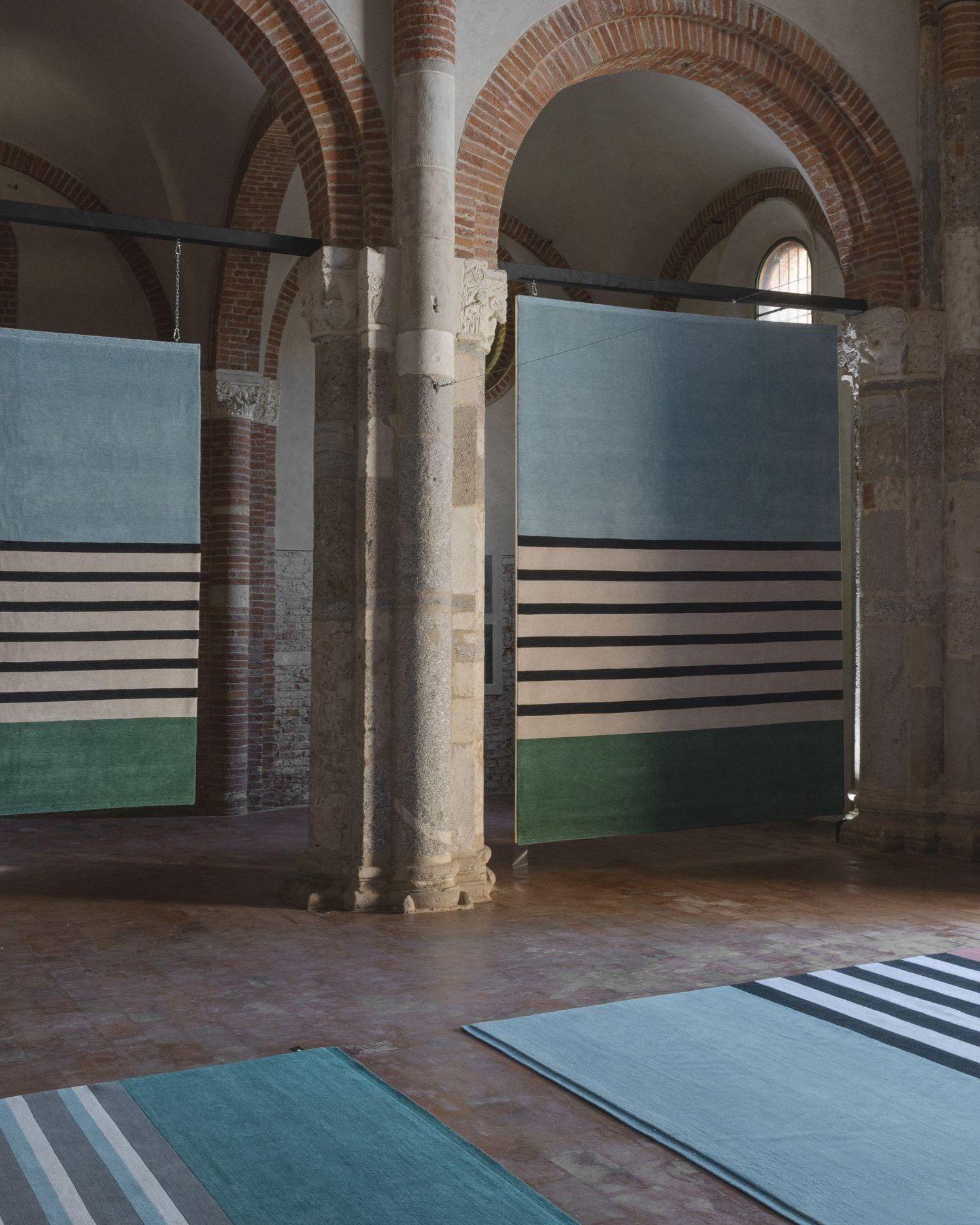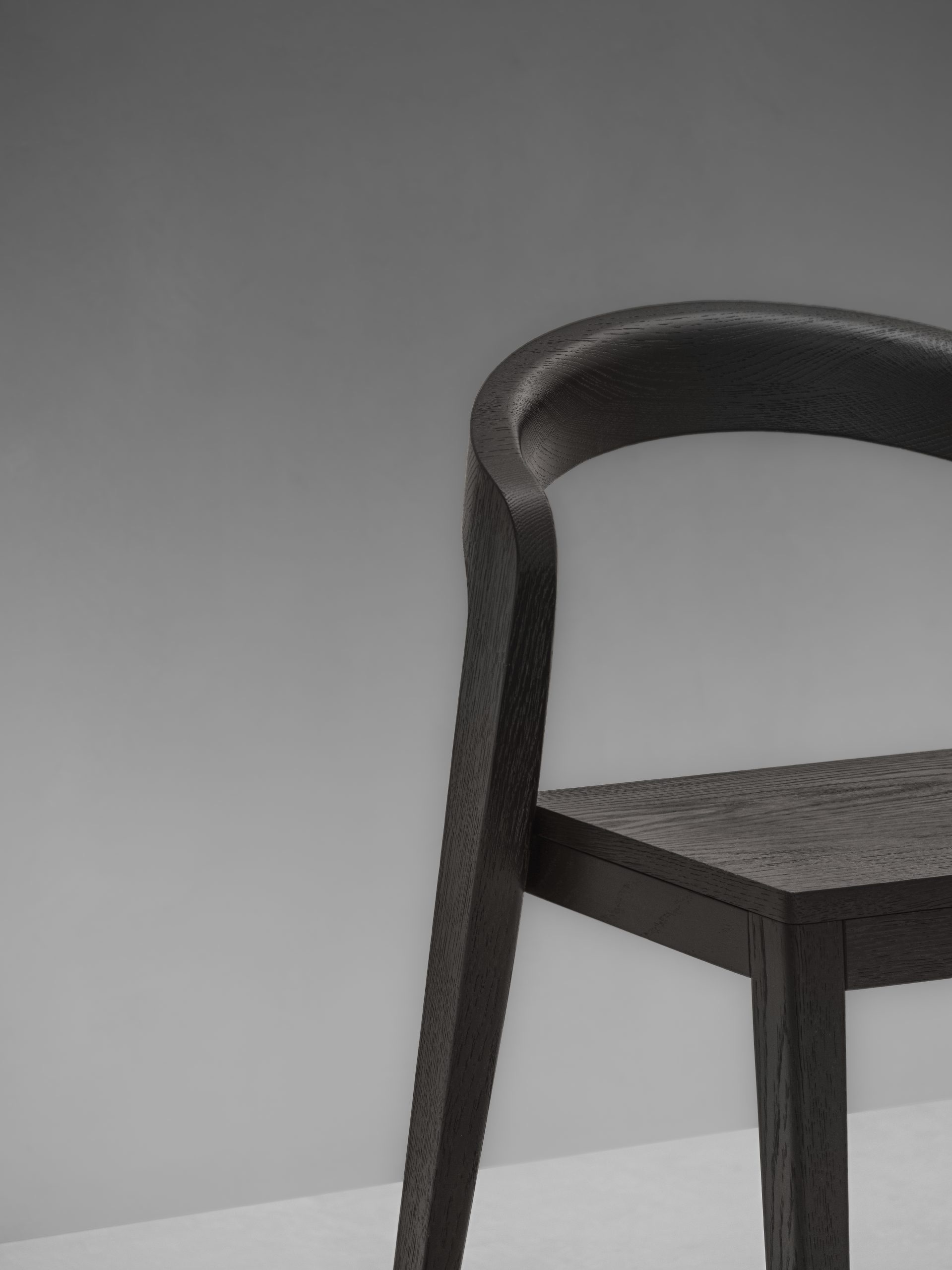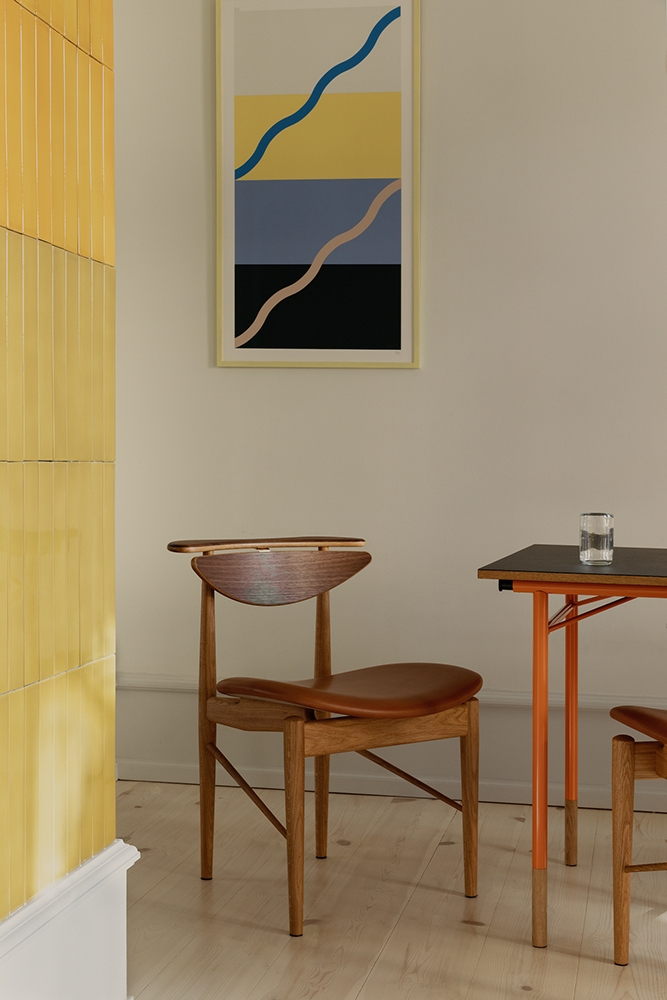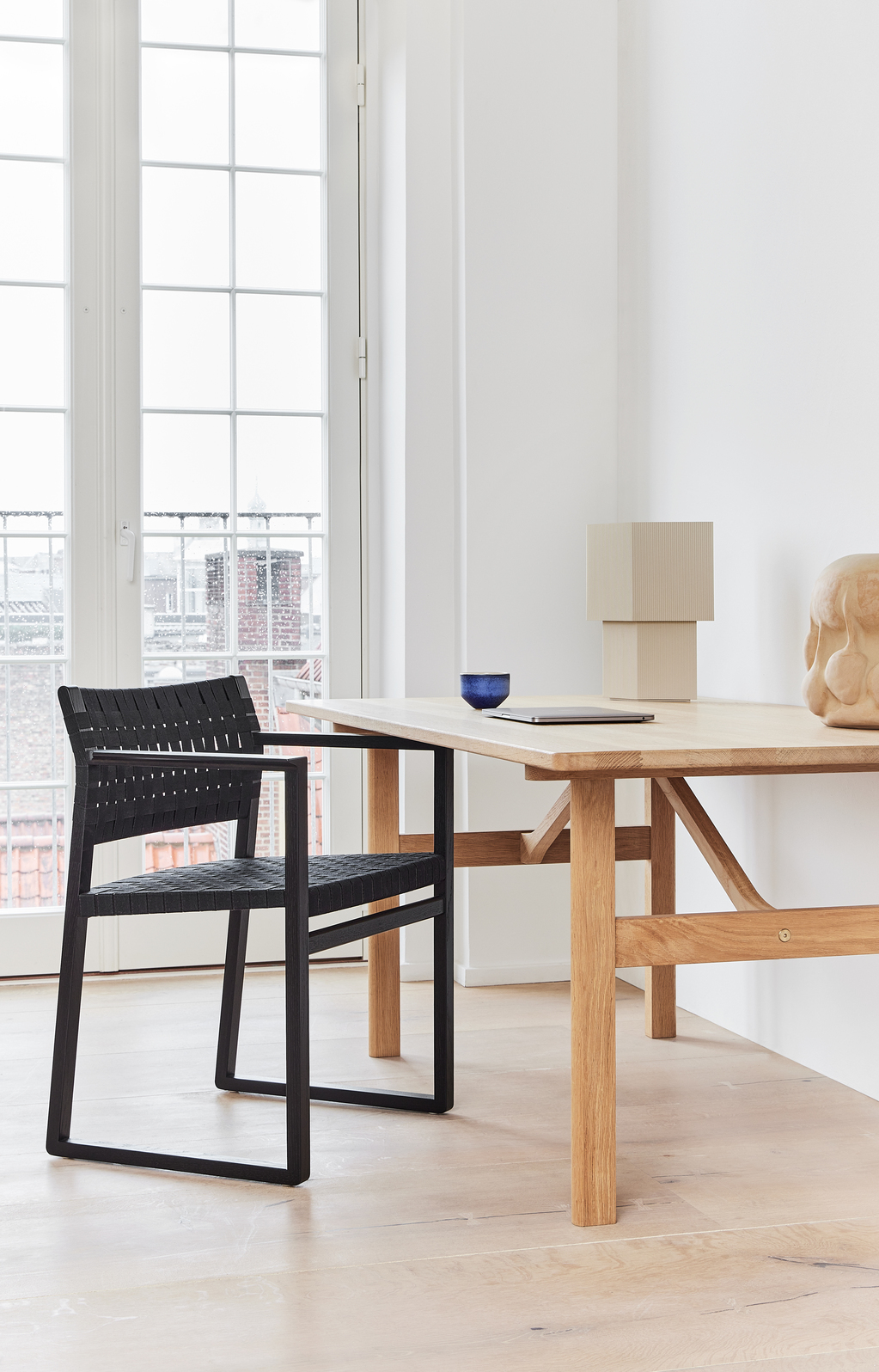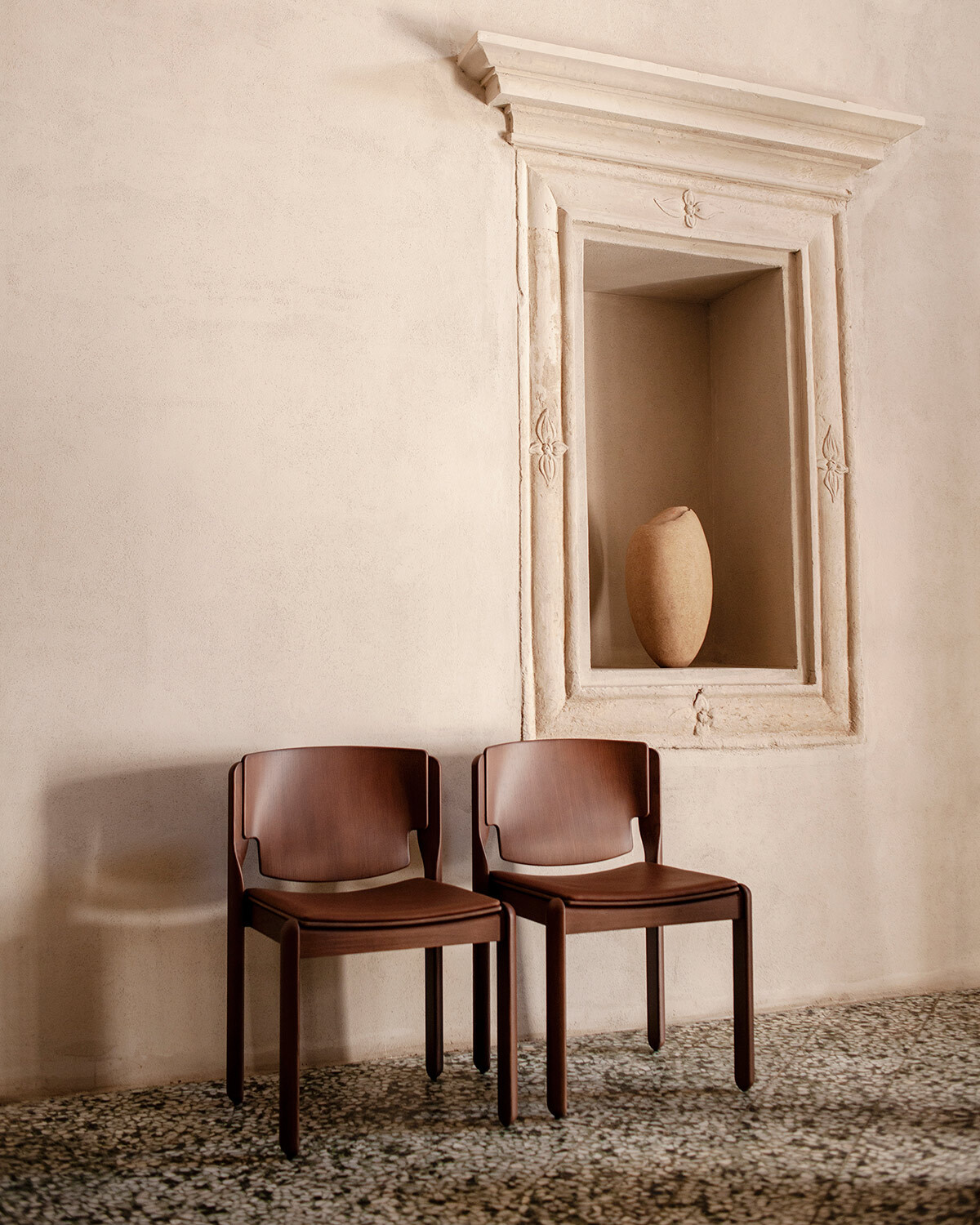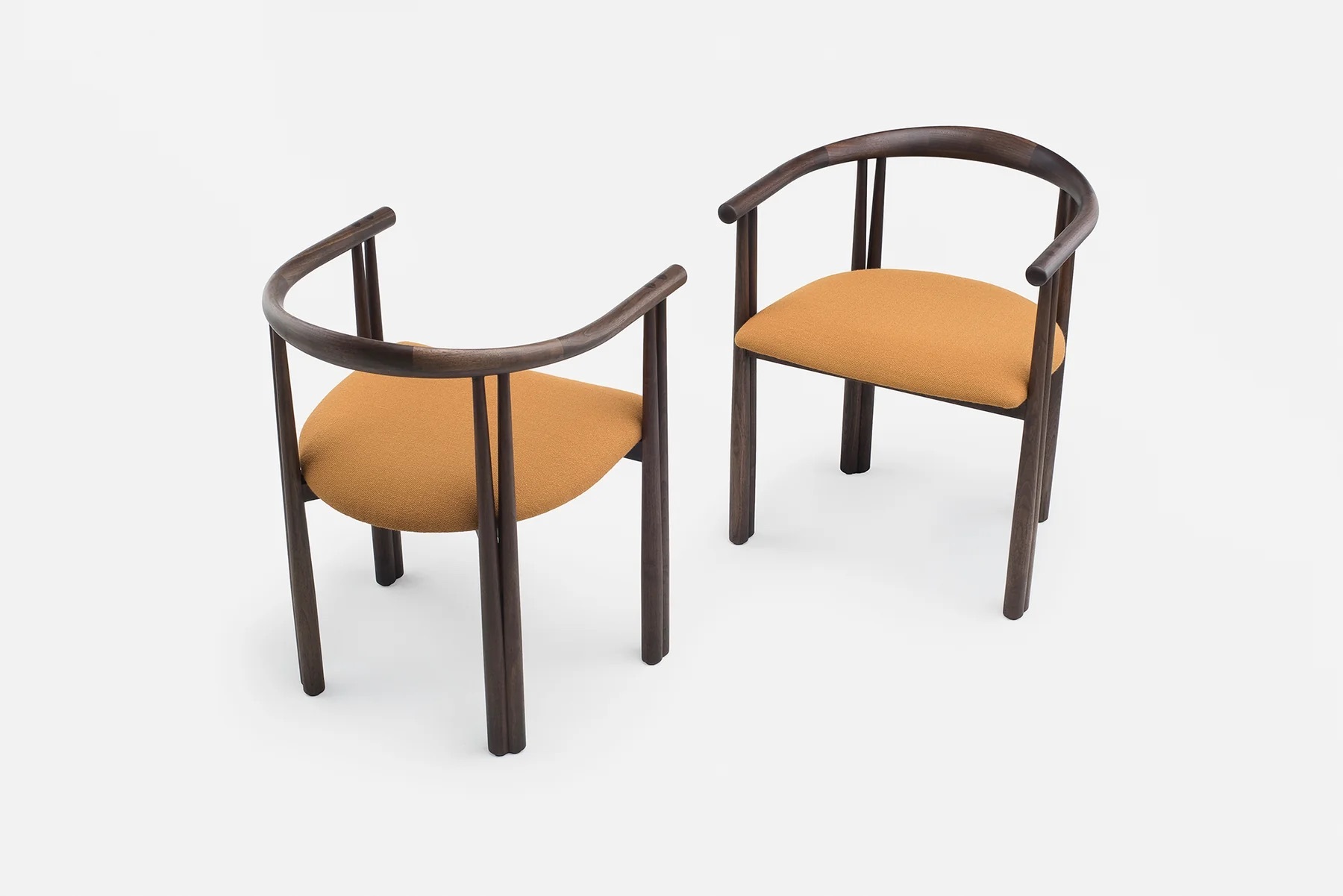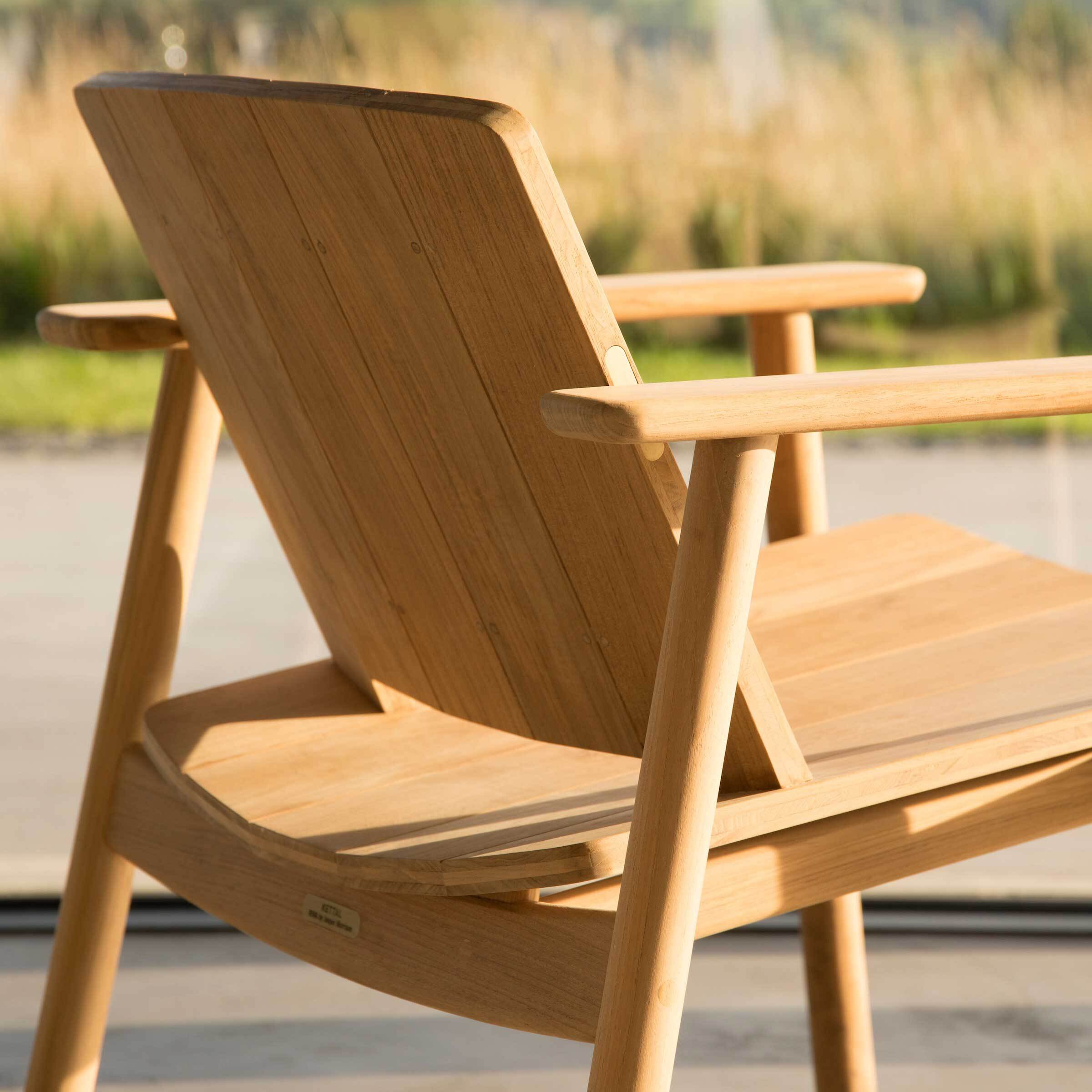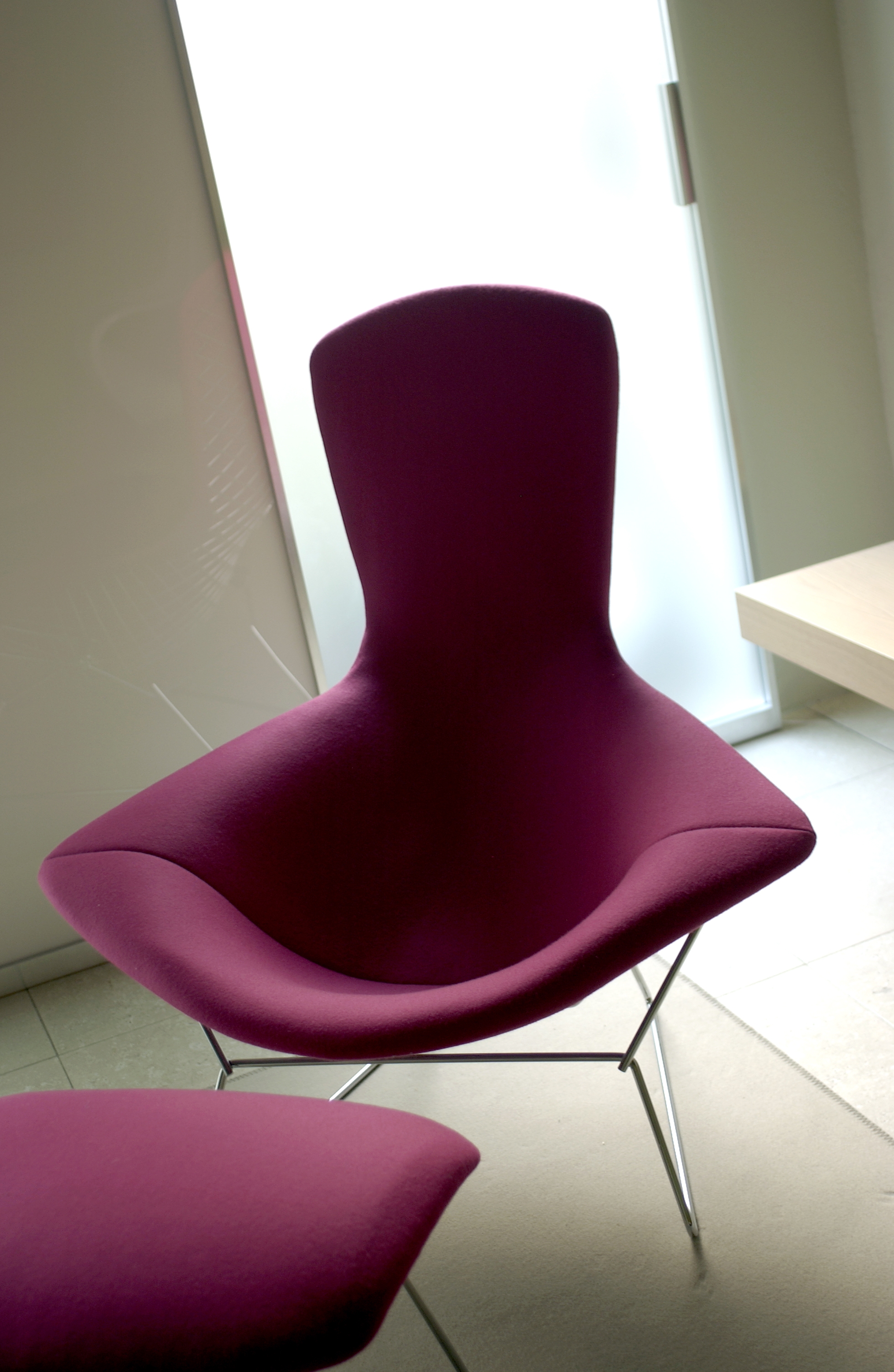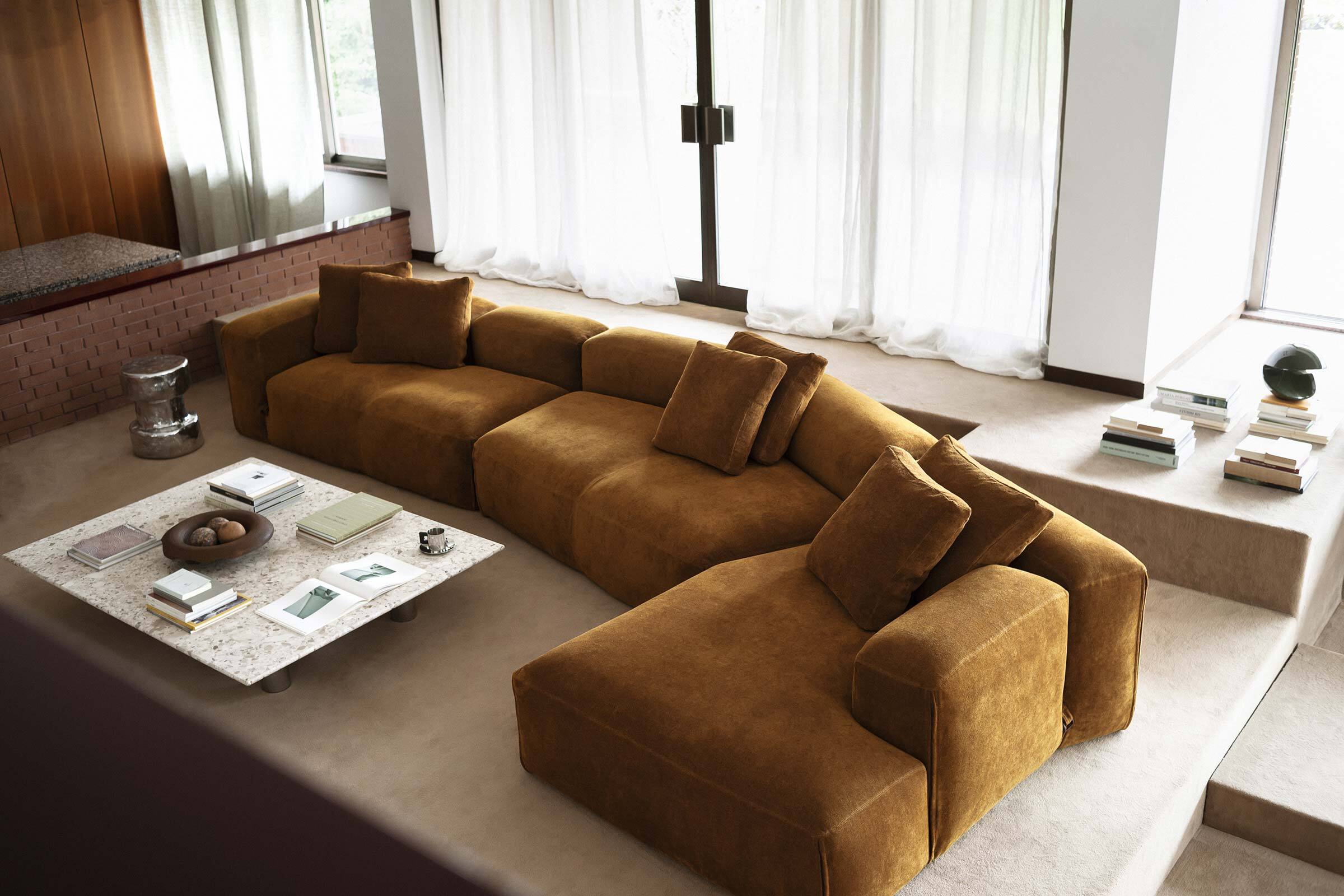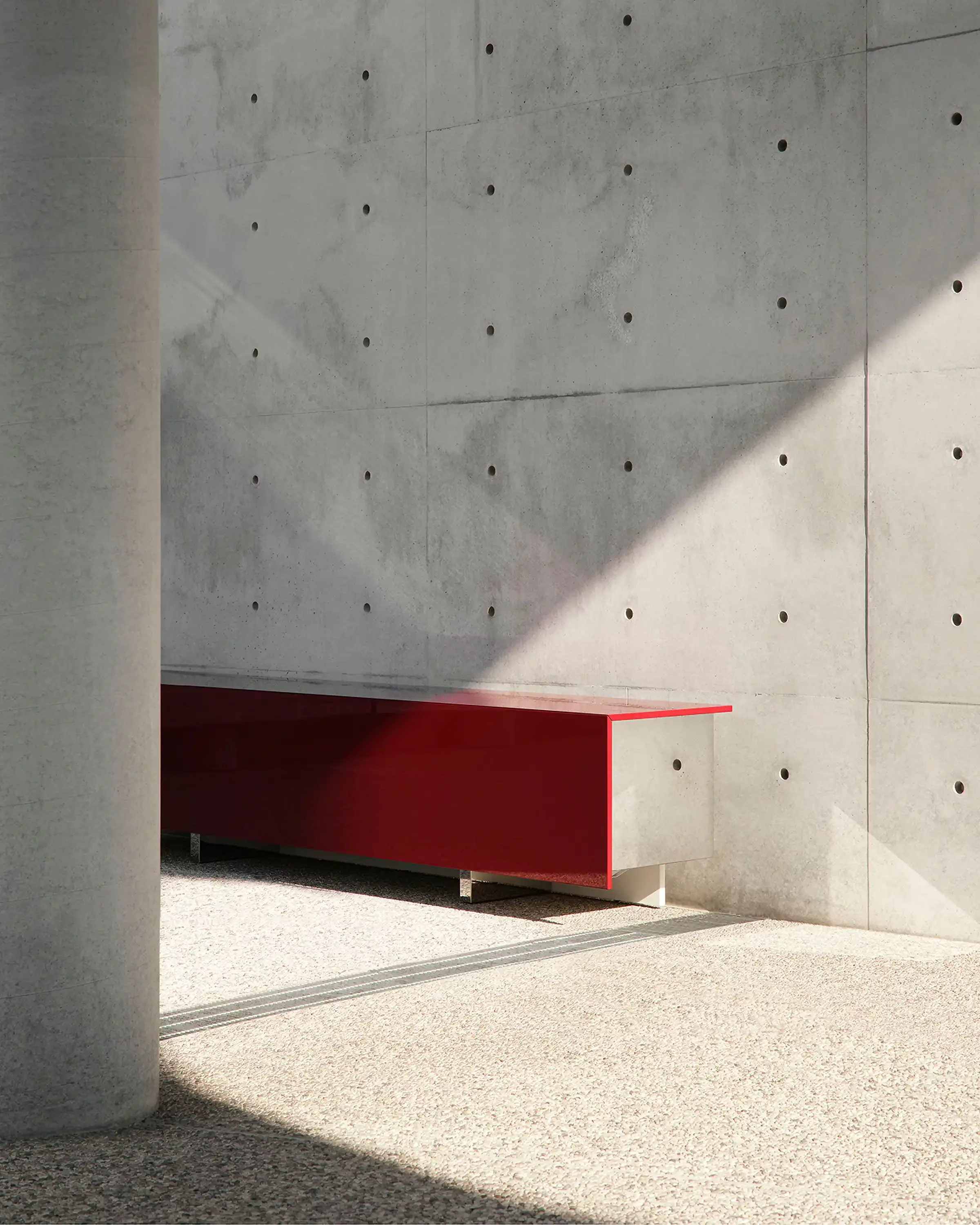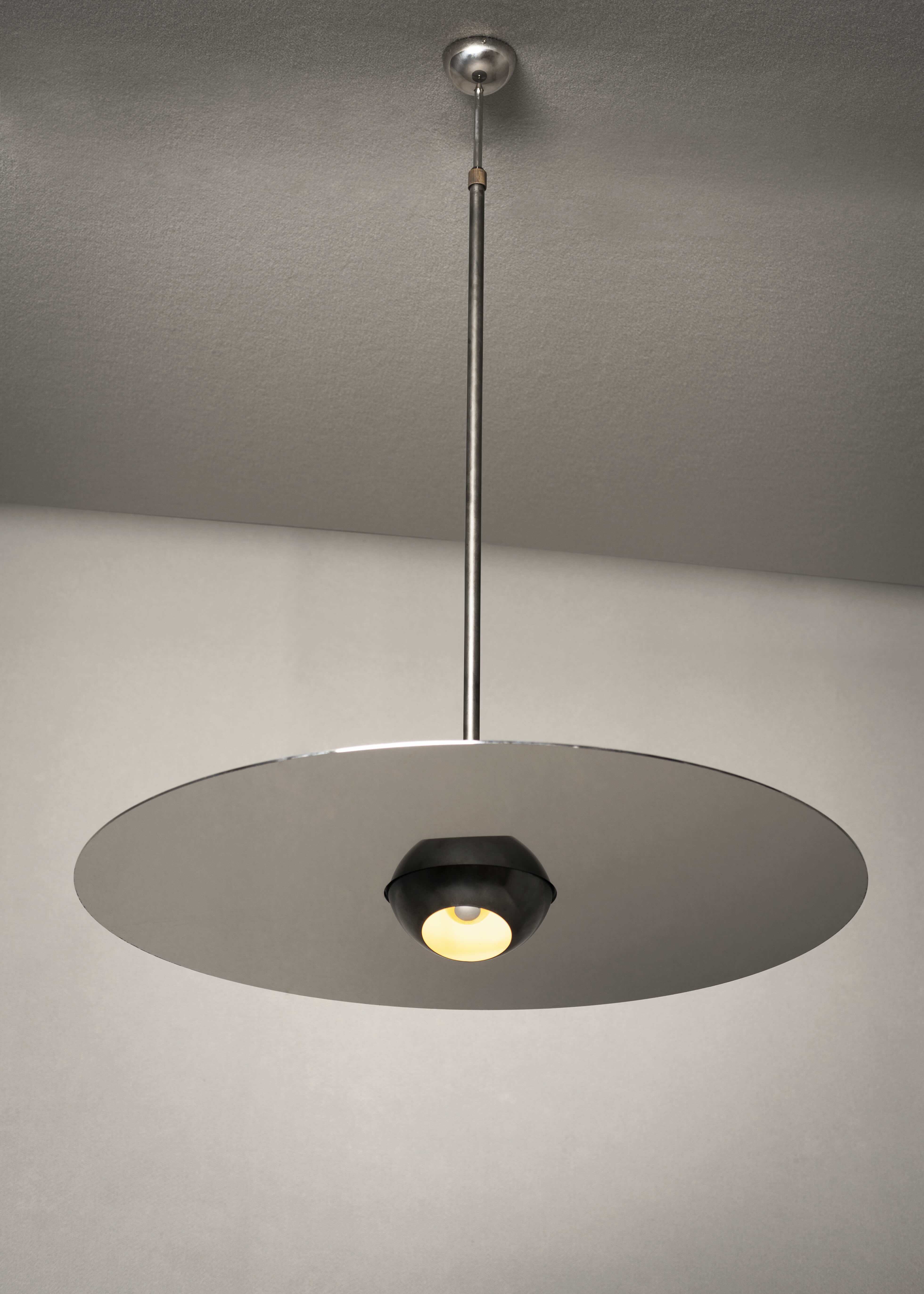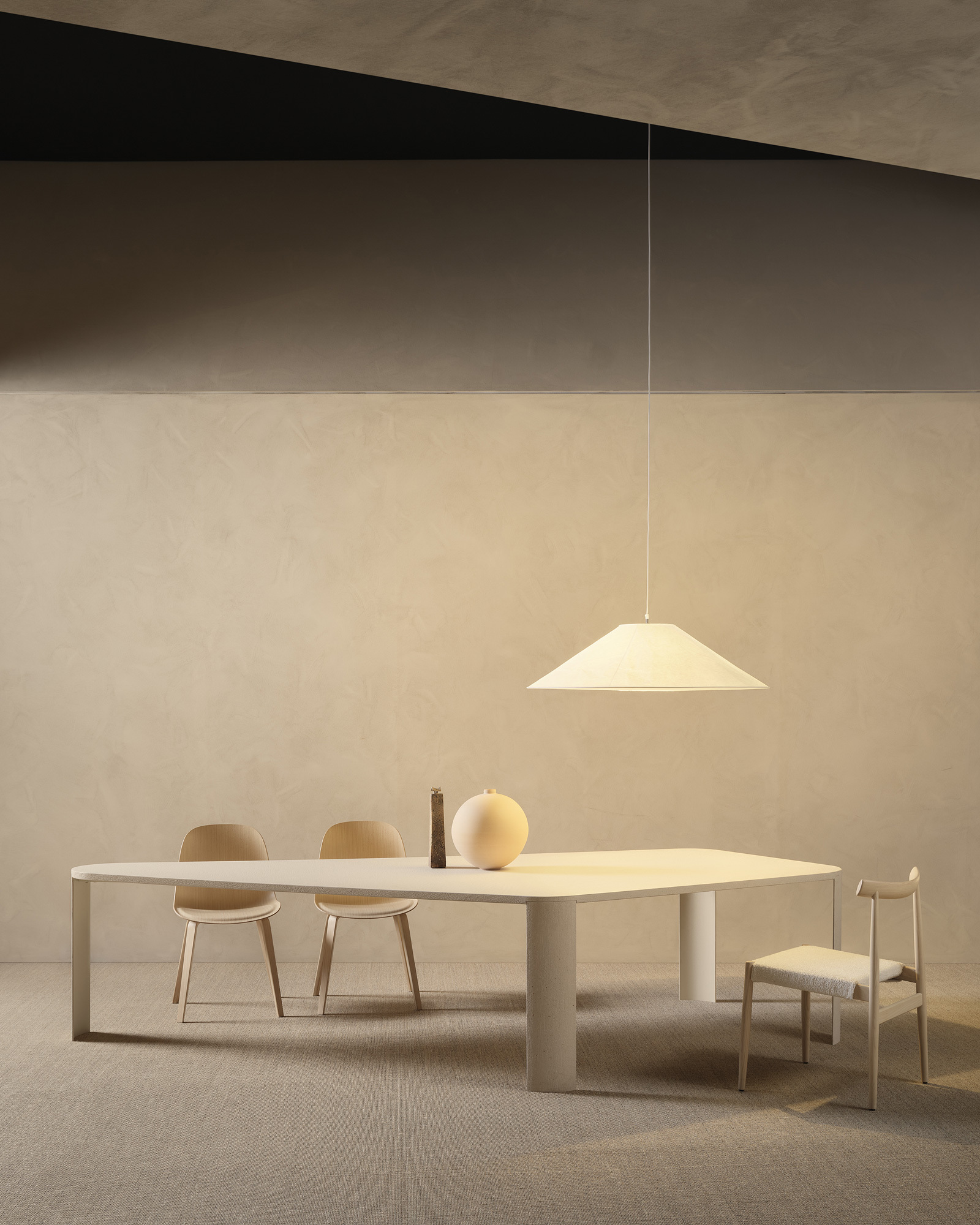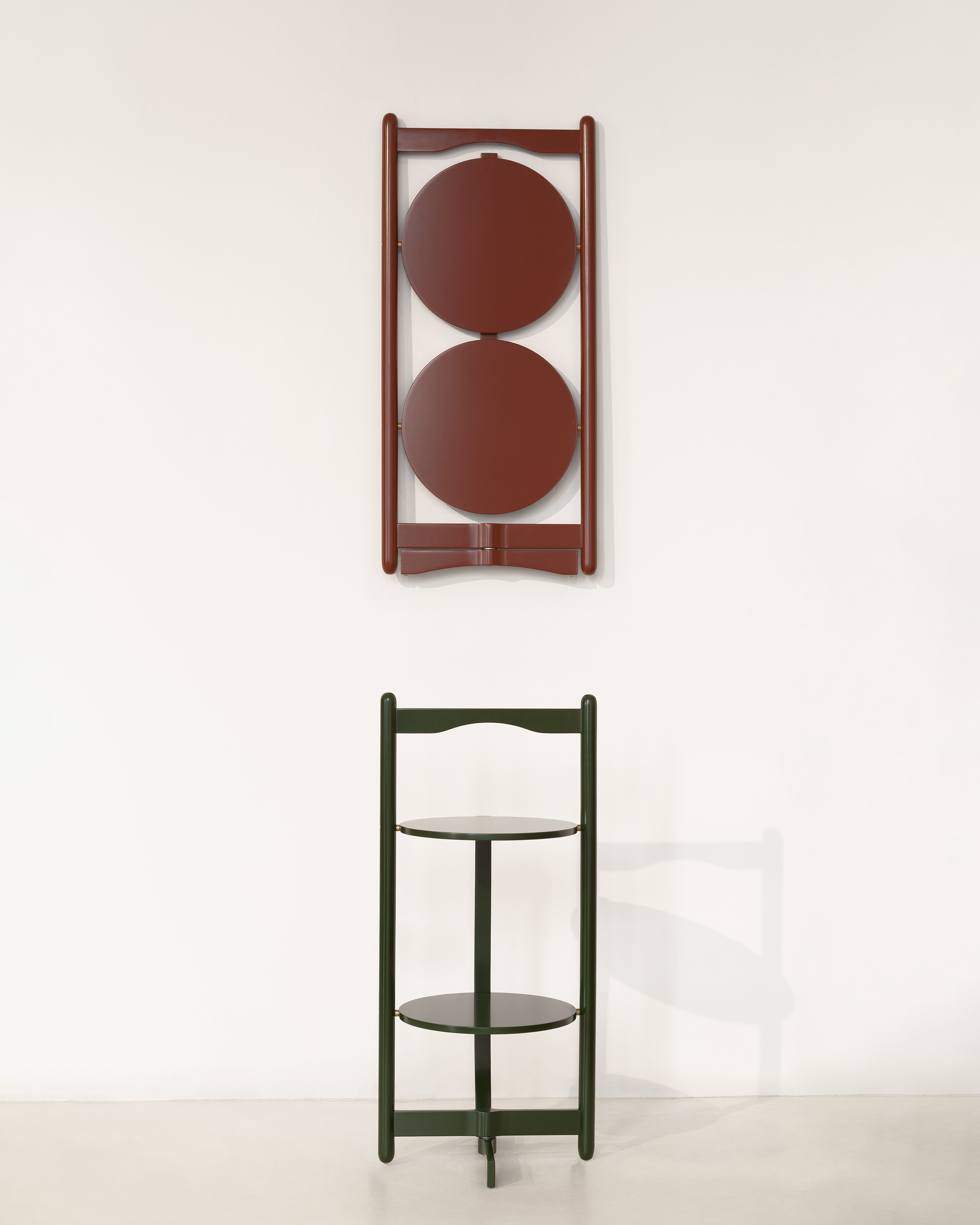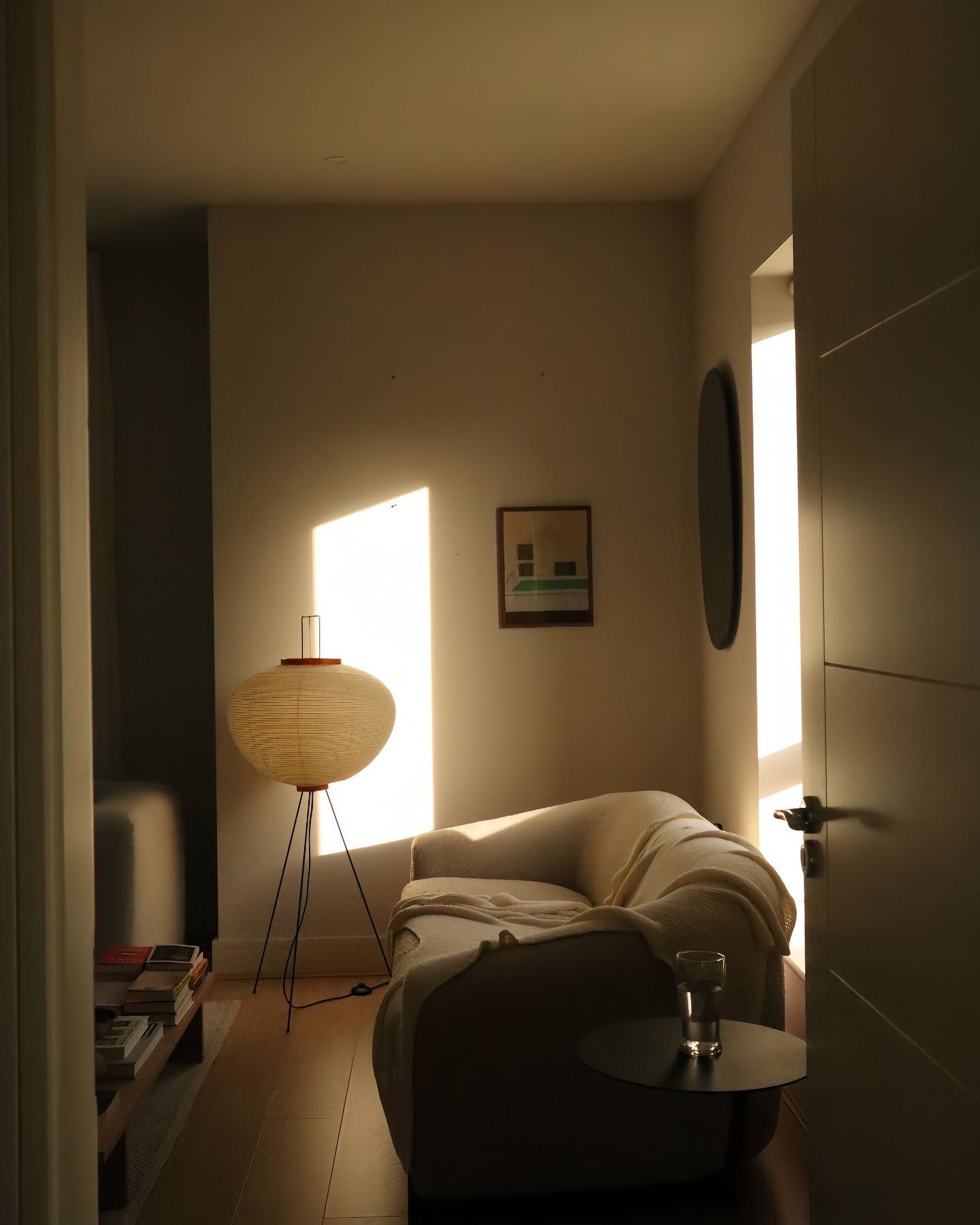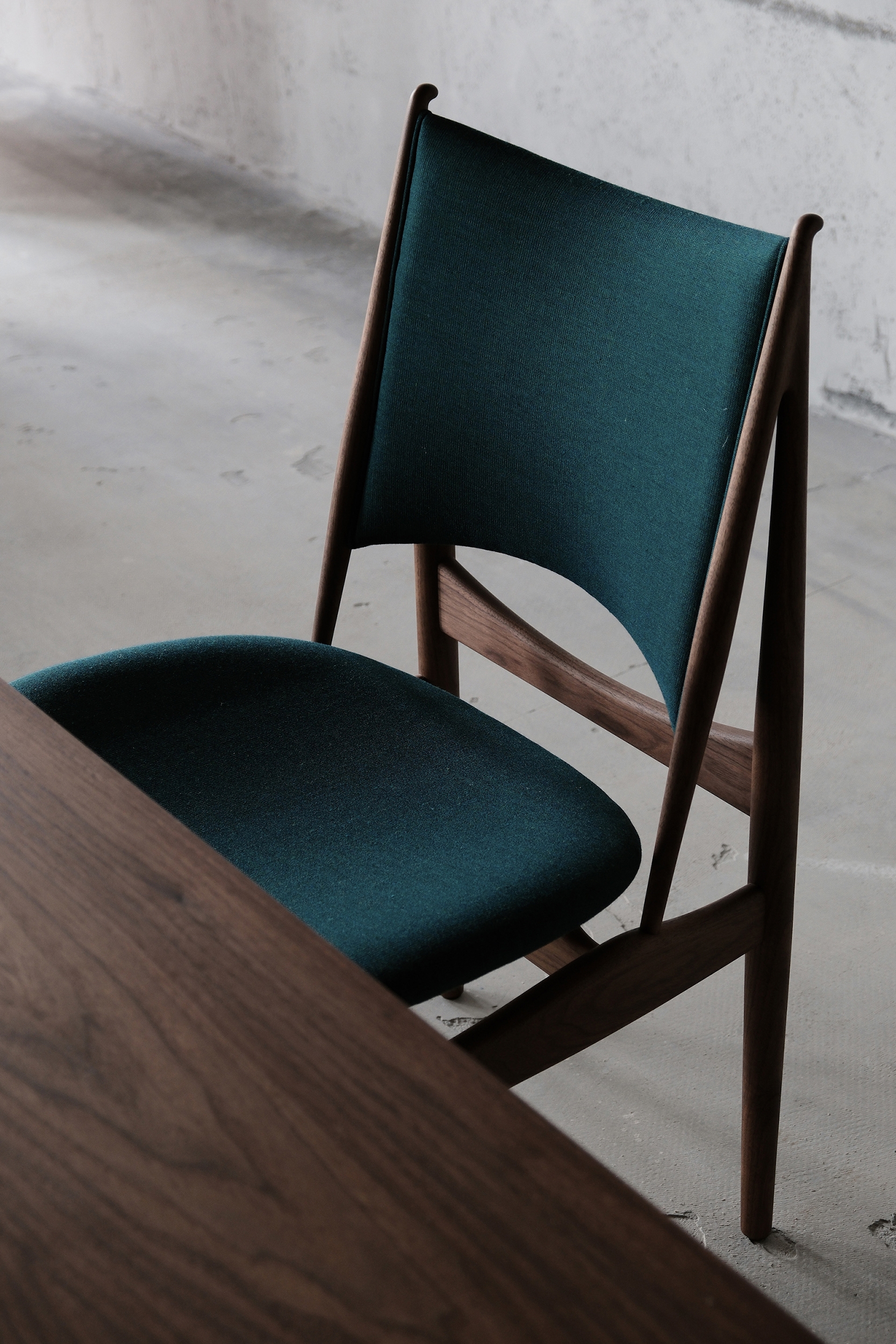
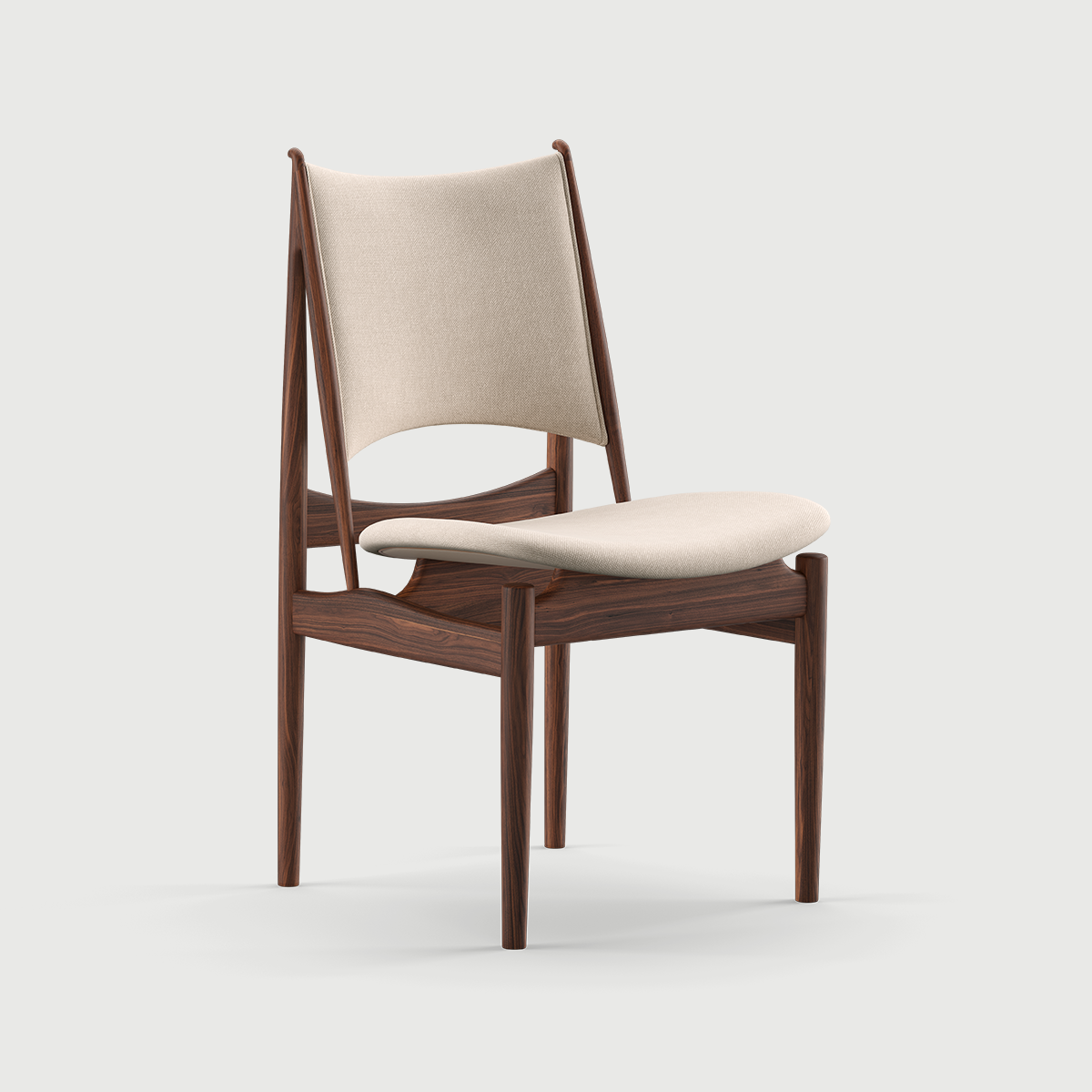
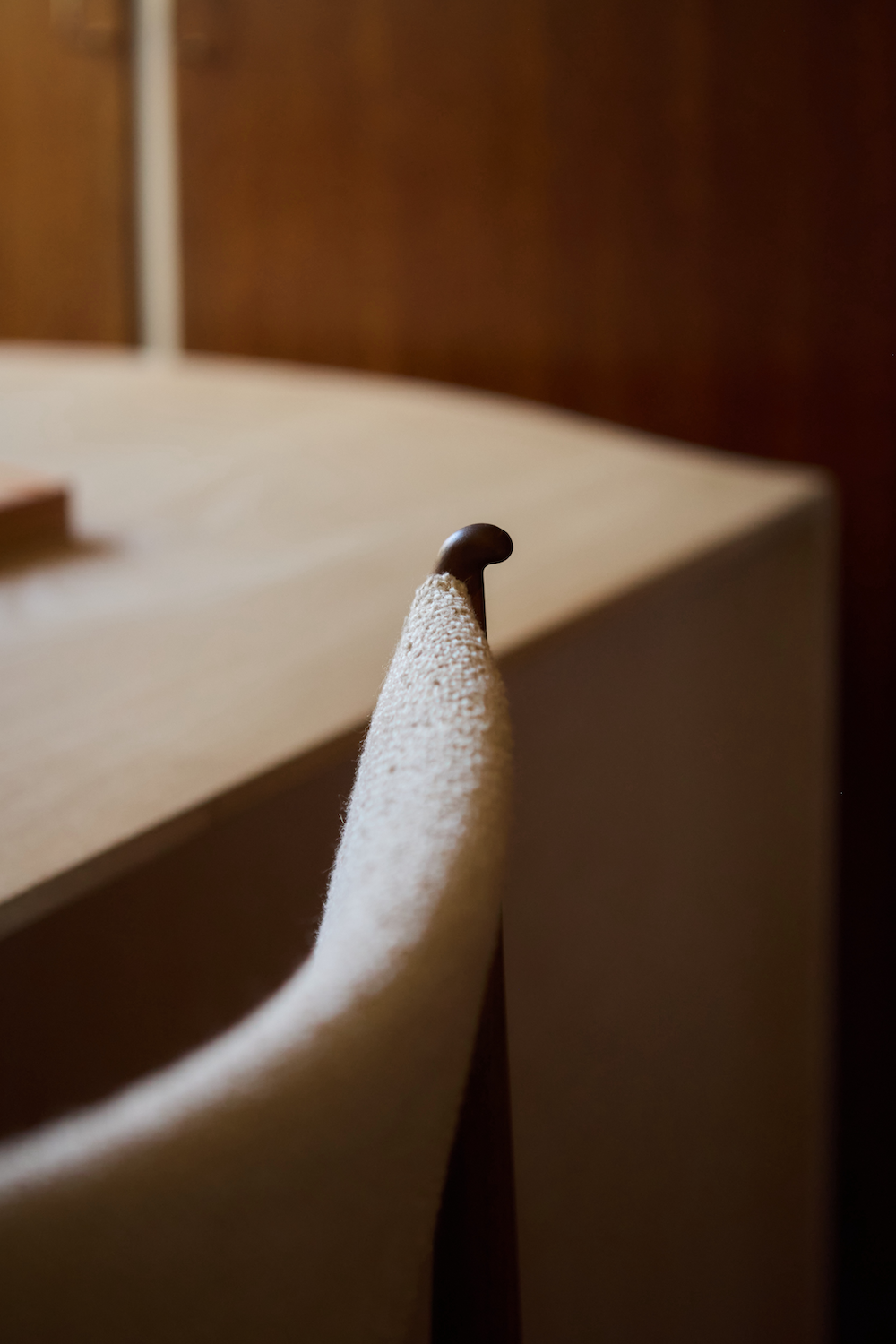
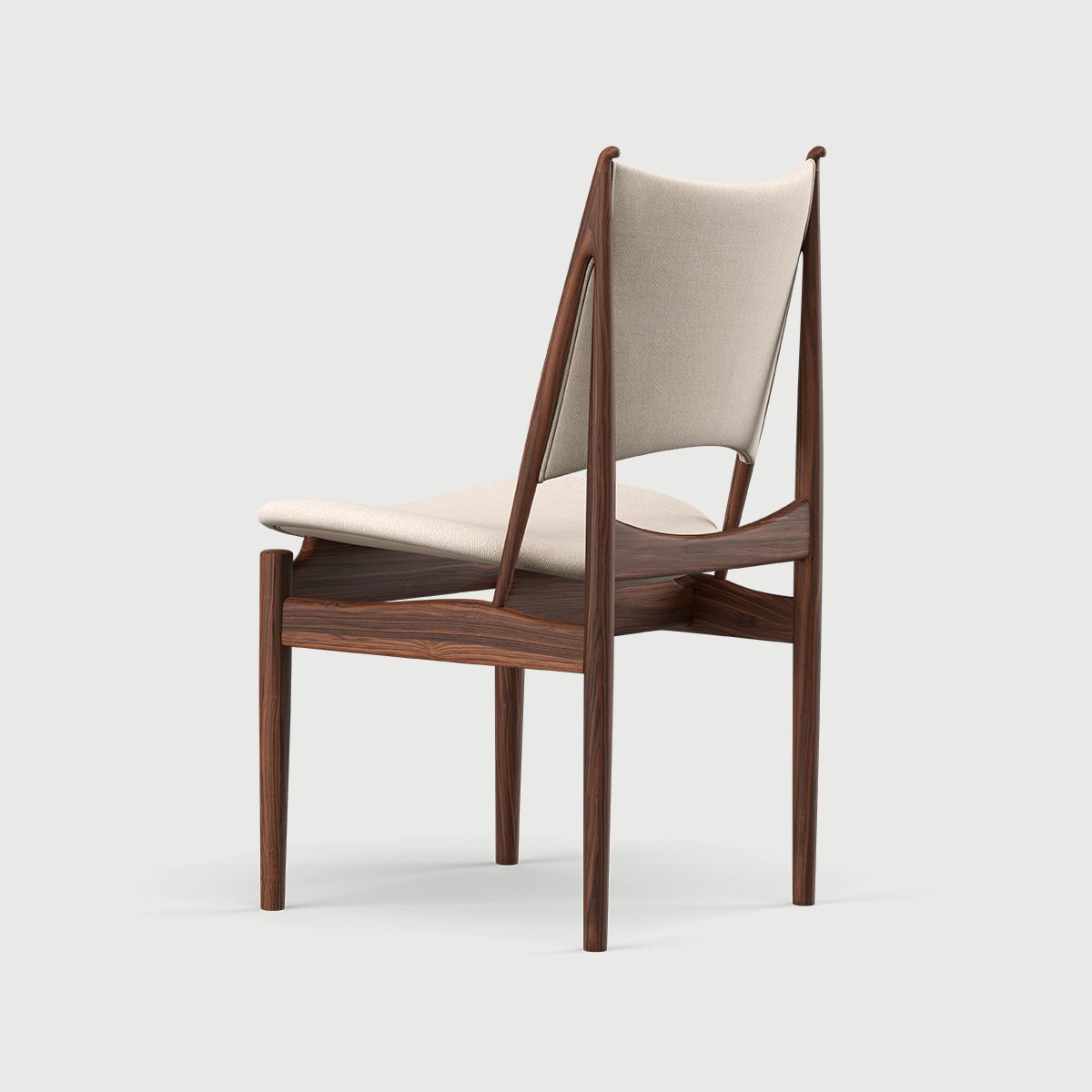
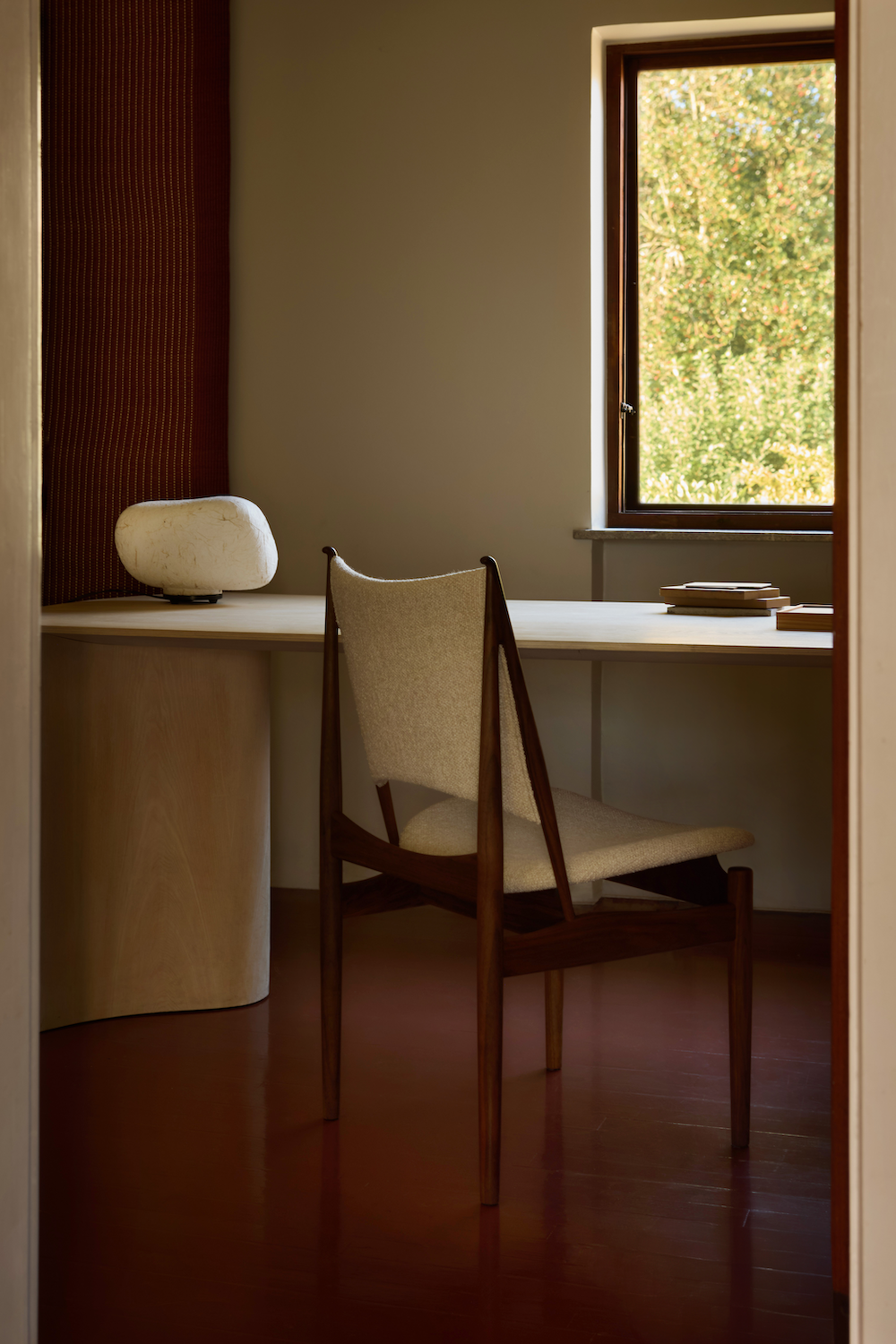
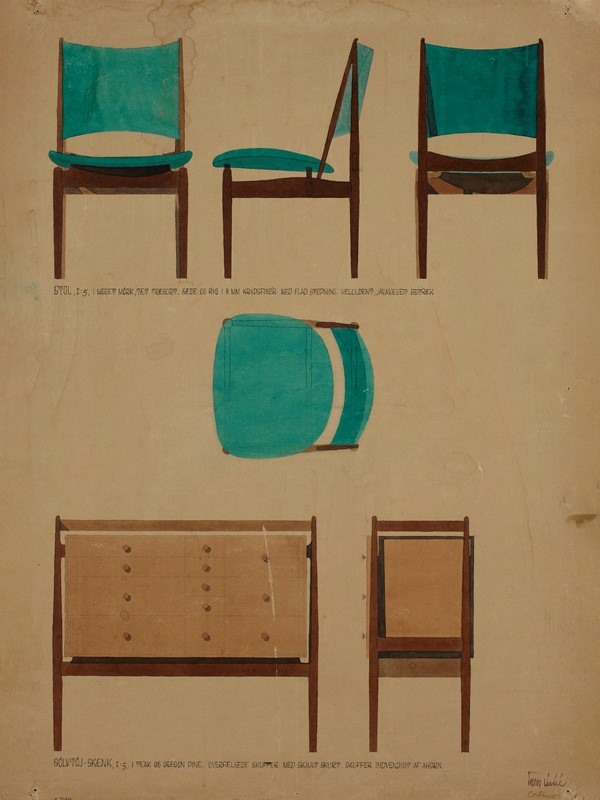






The Egyptian Chair
Category
Seats
Brand
Designer
Dimensions
L 55 cm x D 56 cm x H 89 cm
Finiture
Walnut, Oak
Year
1949
Design critics have described the Egyptian Chair as a striking fusion of ancient Egyptian design principles, modern aesthetics, and aerodynamics. The chair was first displayed in 1949 at the Cabinetmakers' Guild Exhibition in Copenhagen alongside the iconic Chieftain Chair, which shares some of the same characteristic details, such as the distinctive horns of the frame. The Egyptian Chair is characterized by its unique craftsmanship and it is upholstered by hand in Denmark in leather or textile. The frame is available in oak or walnut.
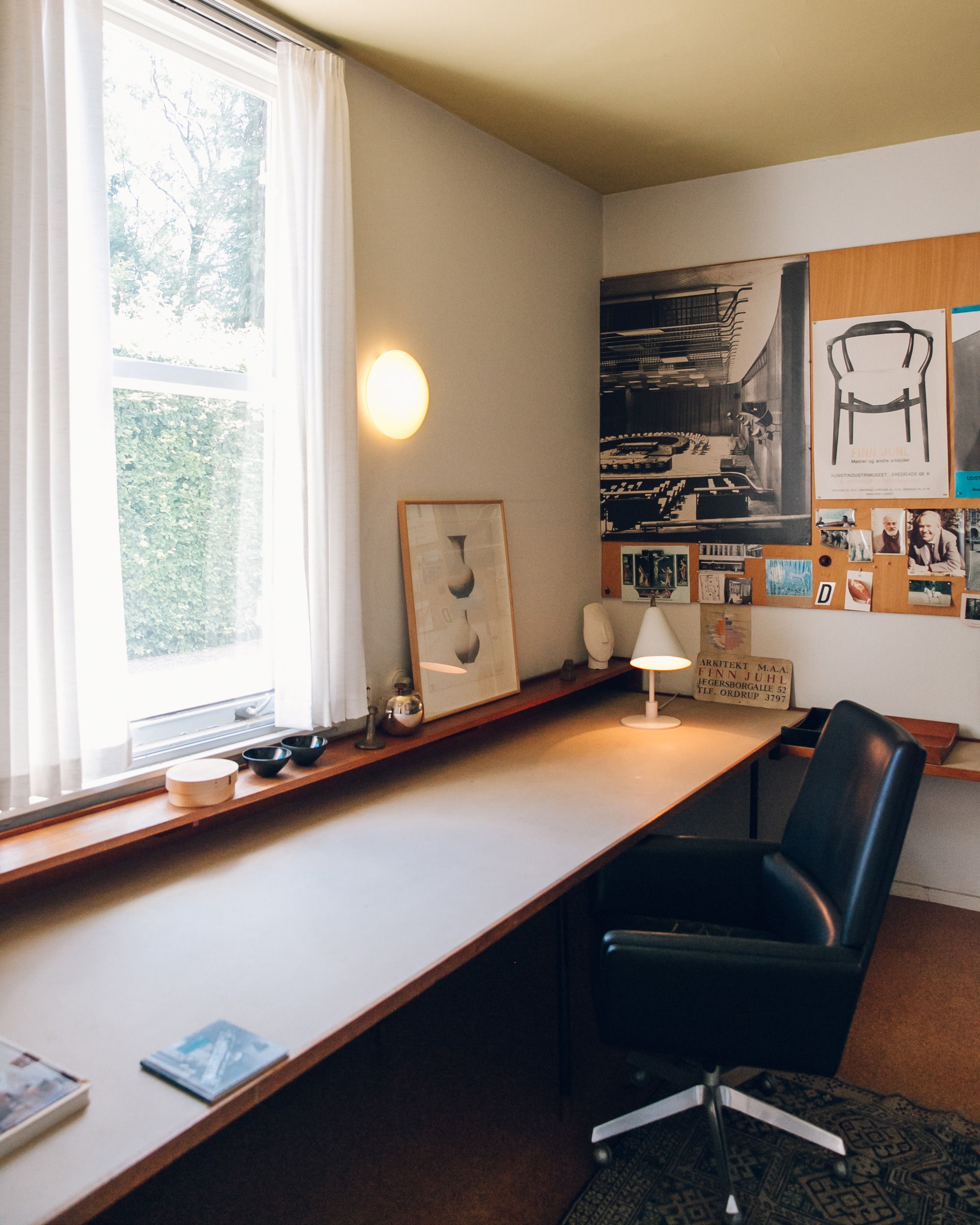
House of Finn Juhl
House of Finn Juhl repurposes tables, sofas, and armchairs by architect Finn Juhl (1912-1989), unanimously considered the founding father of modern Danish design. With iconic and timeless beauty, the products in the collection are made almost entirely in Denmark and the upholstered furniture is entirely handcrafted in accordance with Danish tradition.
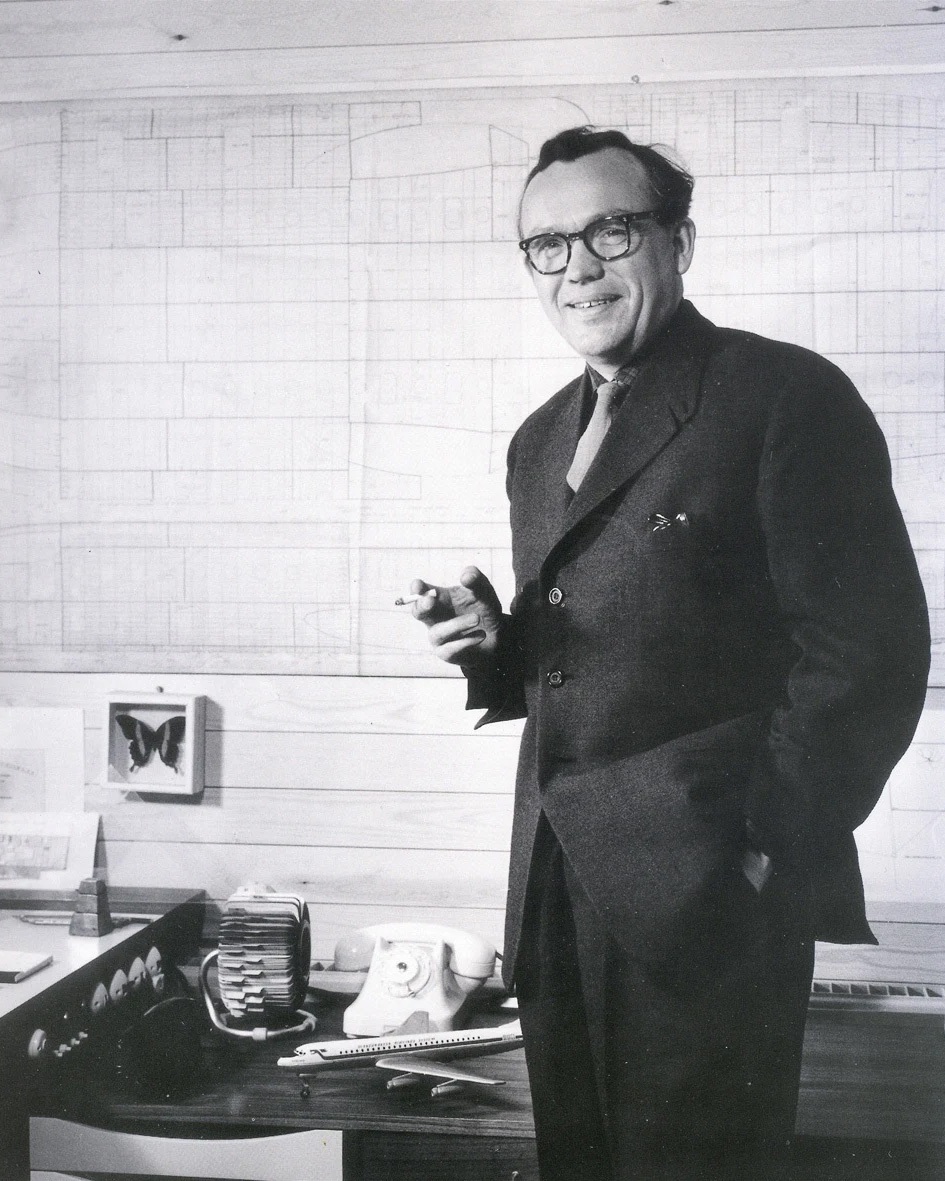
Finn Juhl
Born on January 30, 1912, in Frederiksberg, Finn Juhl is one of the most prominent representatives of Danish design. He studied architecture at the Royal Danish Academy of Fine Arts in Copenhagen and he worked with the famous architect Vilhelm Lauritzen, a leading figure in Danish architectural modernism. In 1942, Juhl designed a house for himself, which is still known simply as House of Finn Juhl (like the brand that produces his designs today). He taught interior design in Copenhagen, before opening his own studio in 1945. In 1951, he made his U.S. debut at the Good Design Show in Chicago and at MoMa in New York. He was later given the task of designing various pieces of furniture for the Danish Embassy in Washington DC and for the interiors of Scandinavian Airlines aircraft. In the 1950s he was appointed interior architect to the Trusteeship Council Chamber of the New York headquarters of the United Nations, a role that made him internationally famous and for which he designs chairs for the organization's deputies.
Results for:
No Results
Discover the selection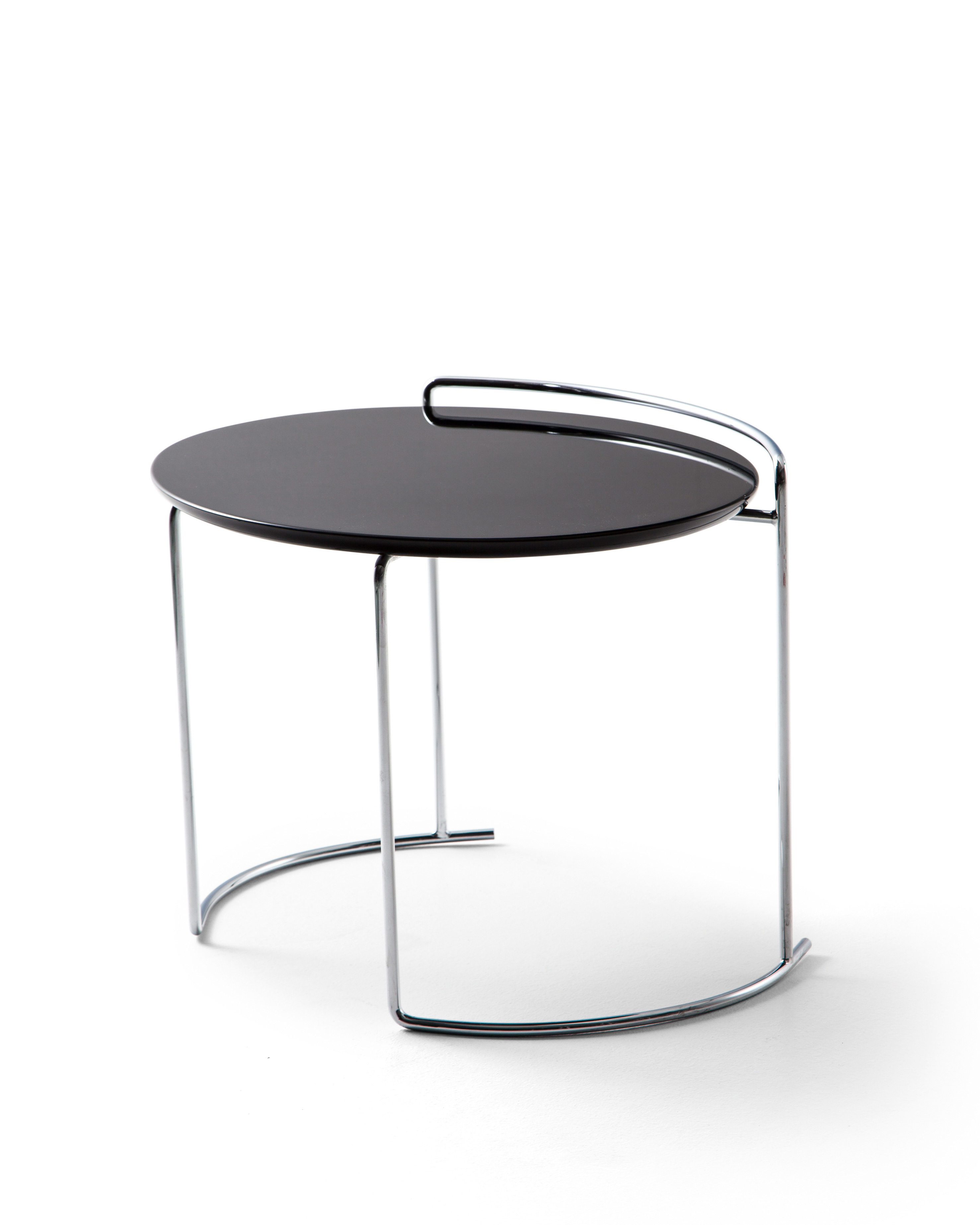
Djuna
Cassina
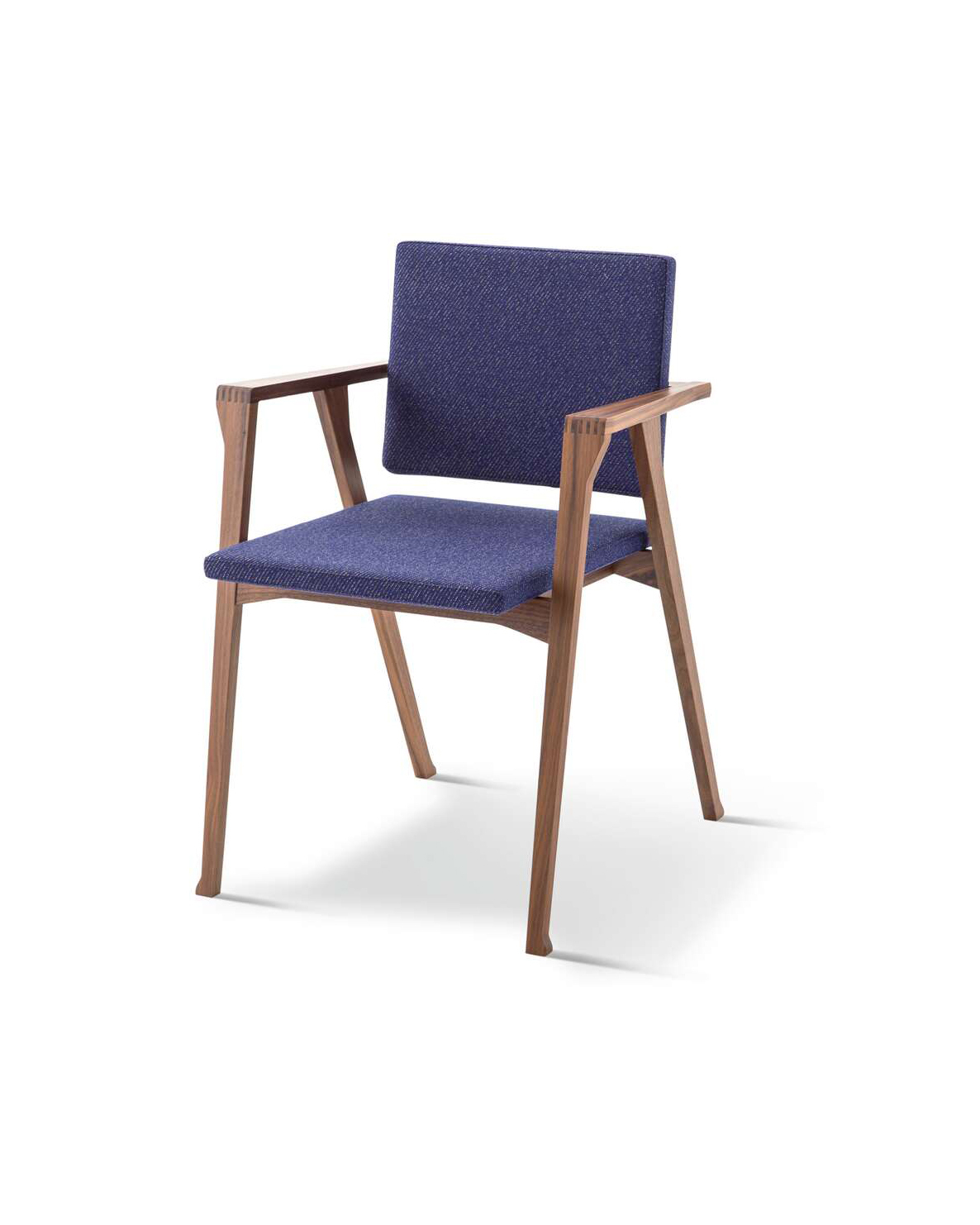
Luisa
Cassina

Superleggera 699
Cassina
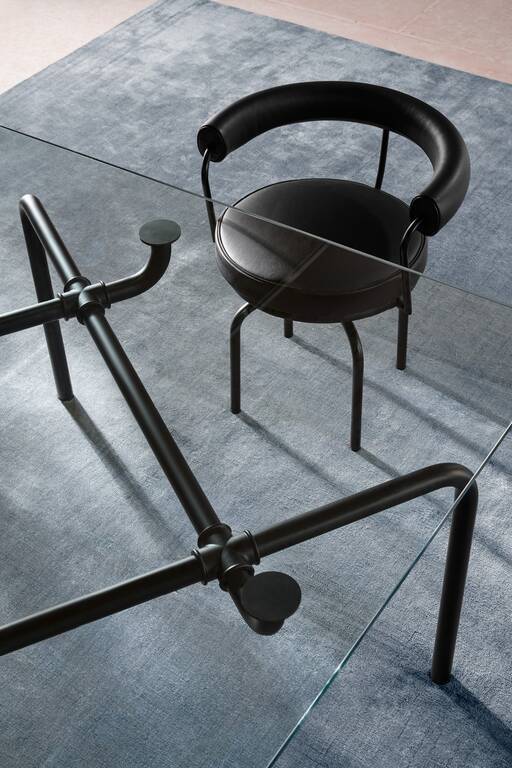
7 Fauteuil Tournant
Cassina

Doron Hotel
Cassina
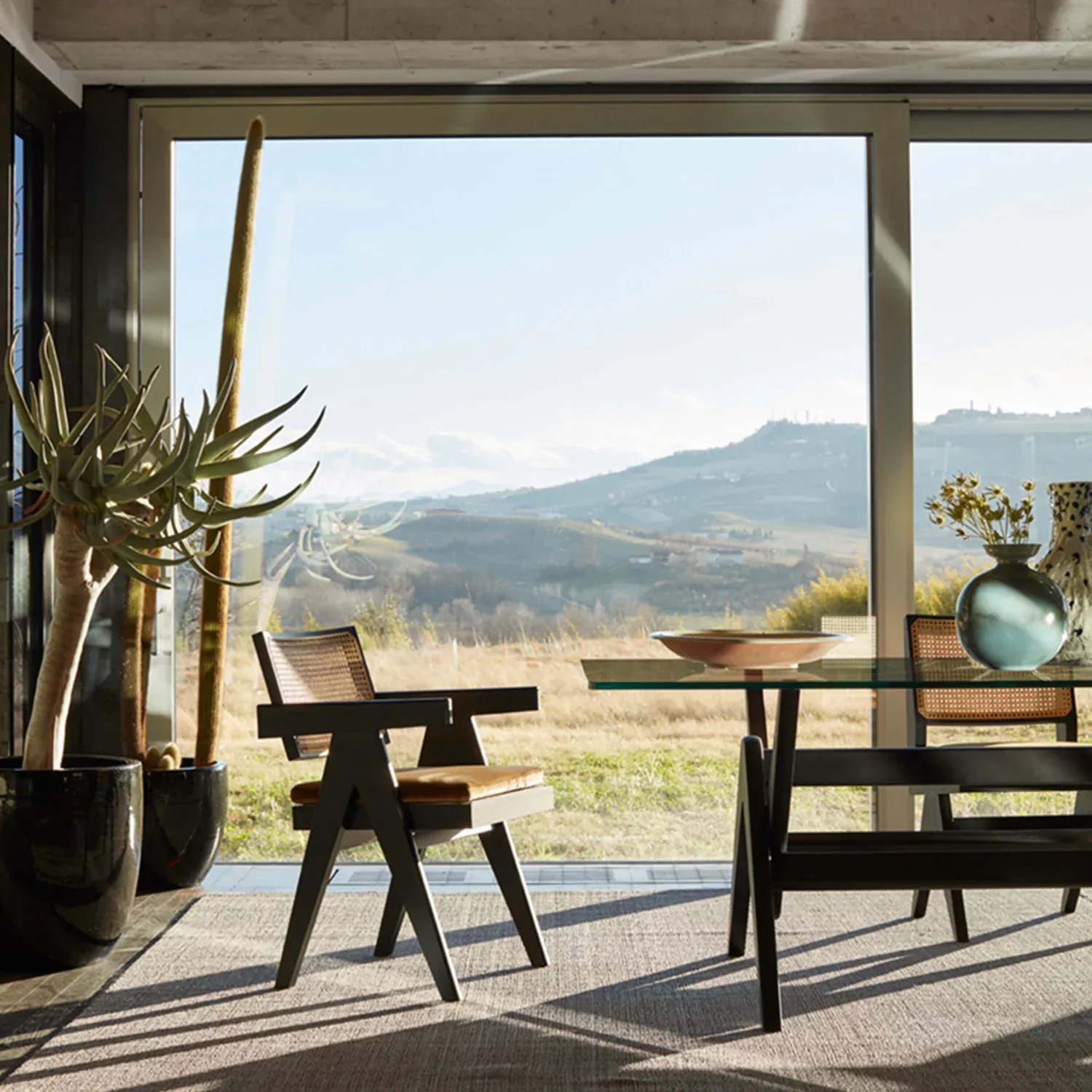
Capitol Complex Chair
Cassina

905 Chair
Cassina
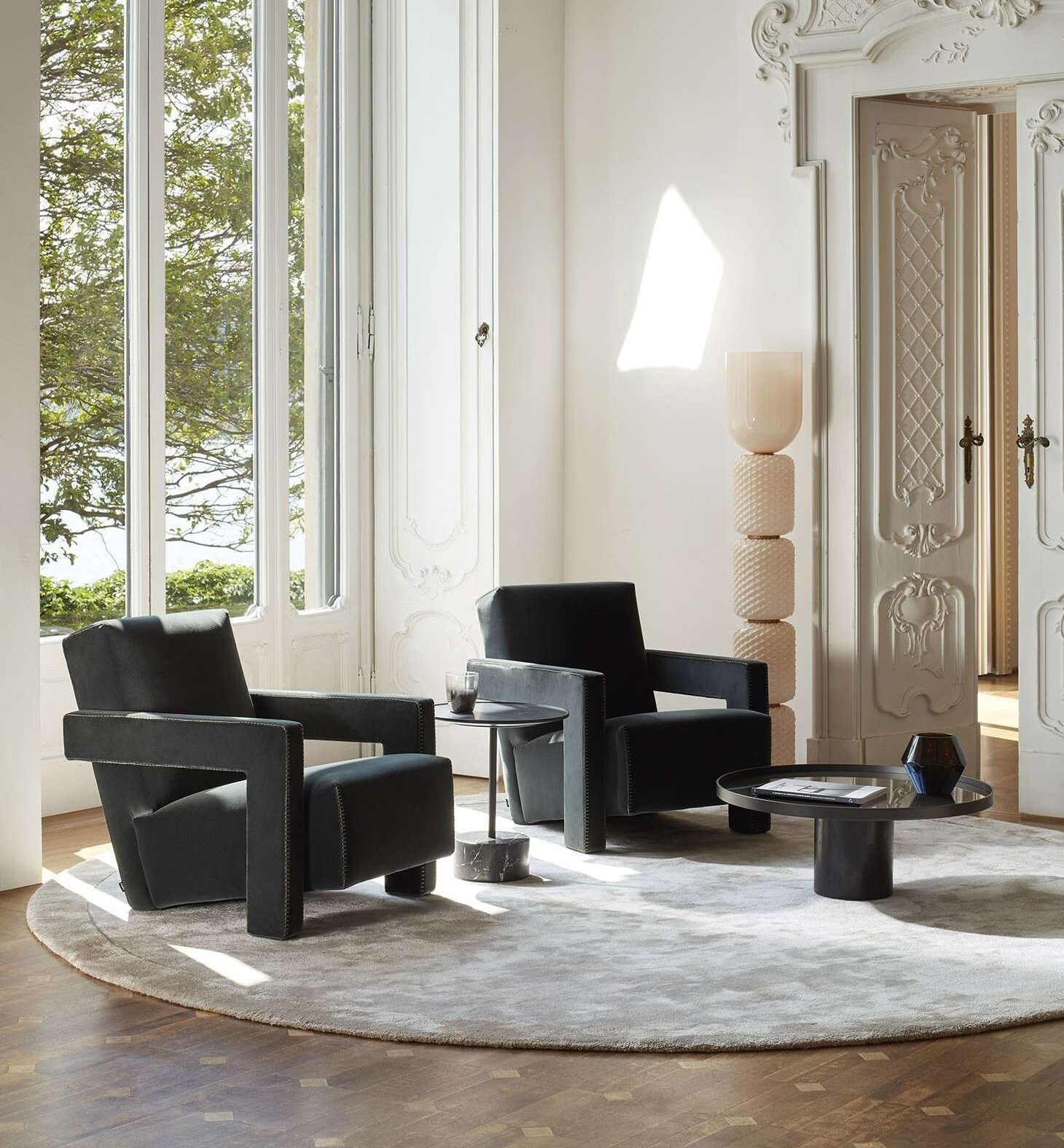
Utrecht XL
Cassina
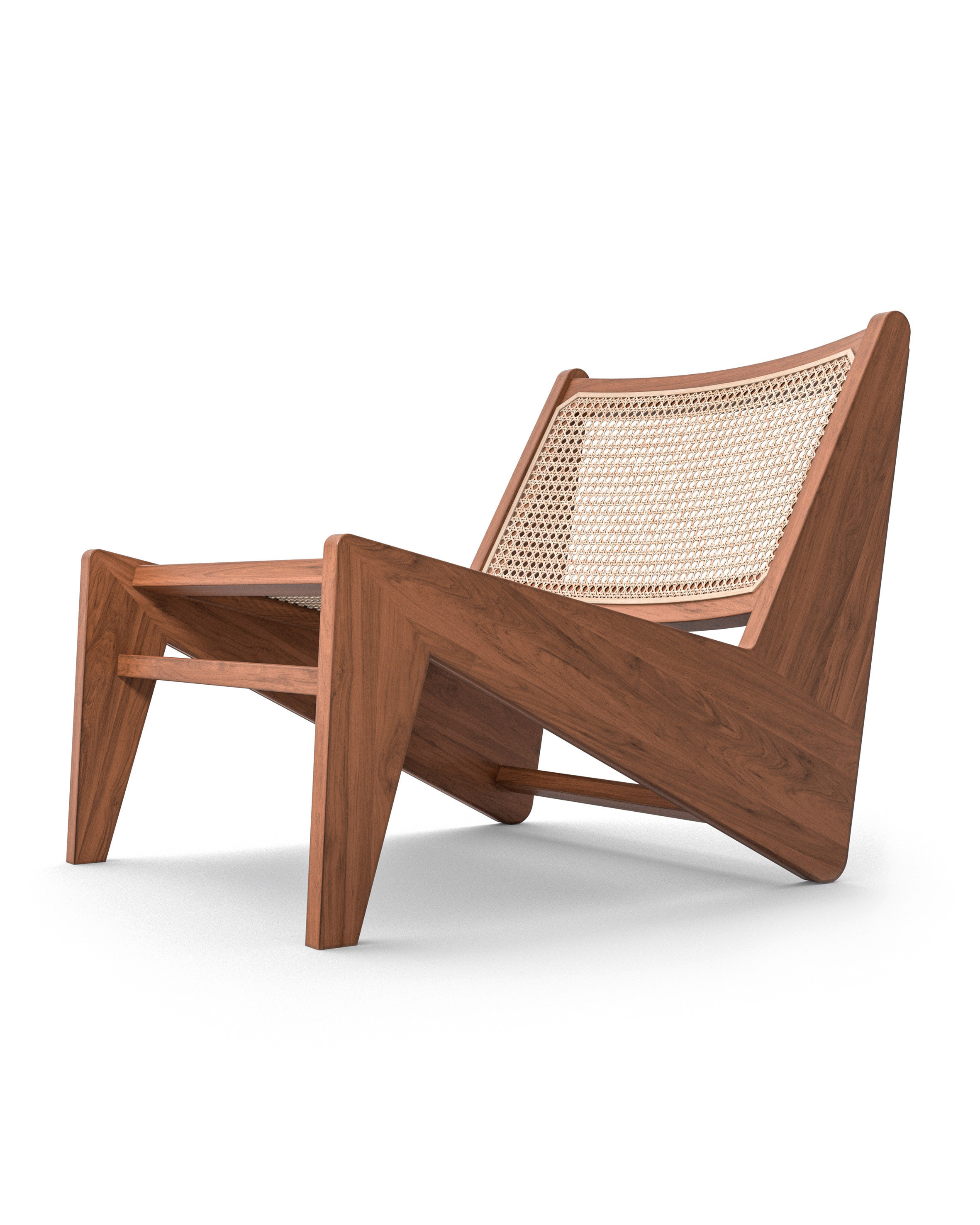
Kangaroo
Cassina
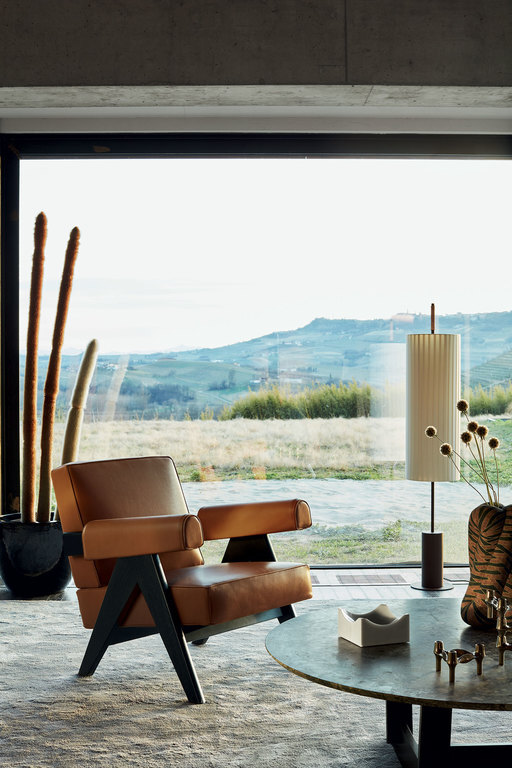
Capitol Complex Armchair
Cassina
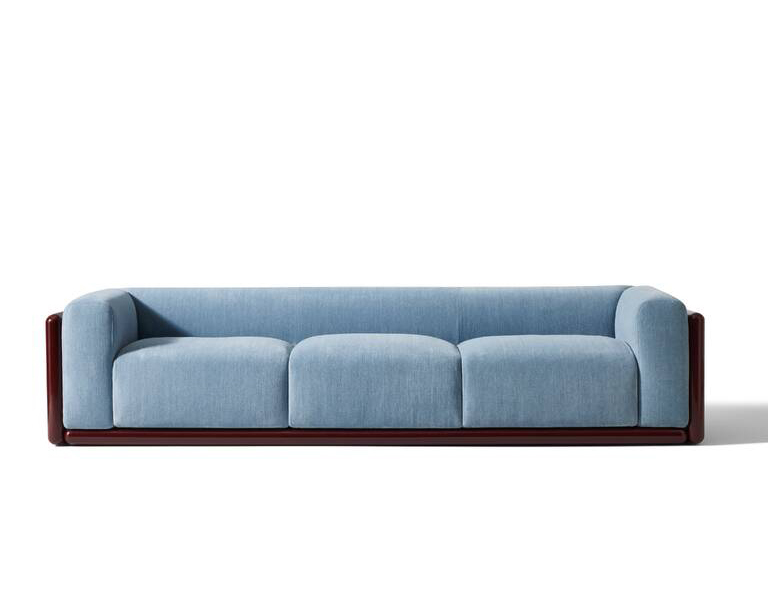
Cornaro
Cassina
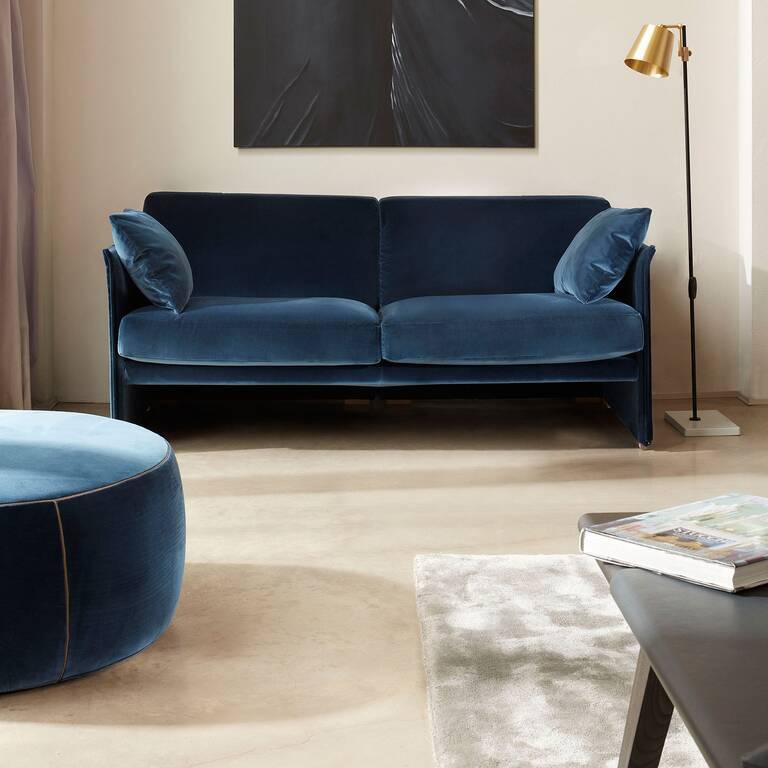
Duc-Duc
Cassina
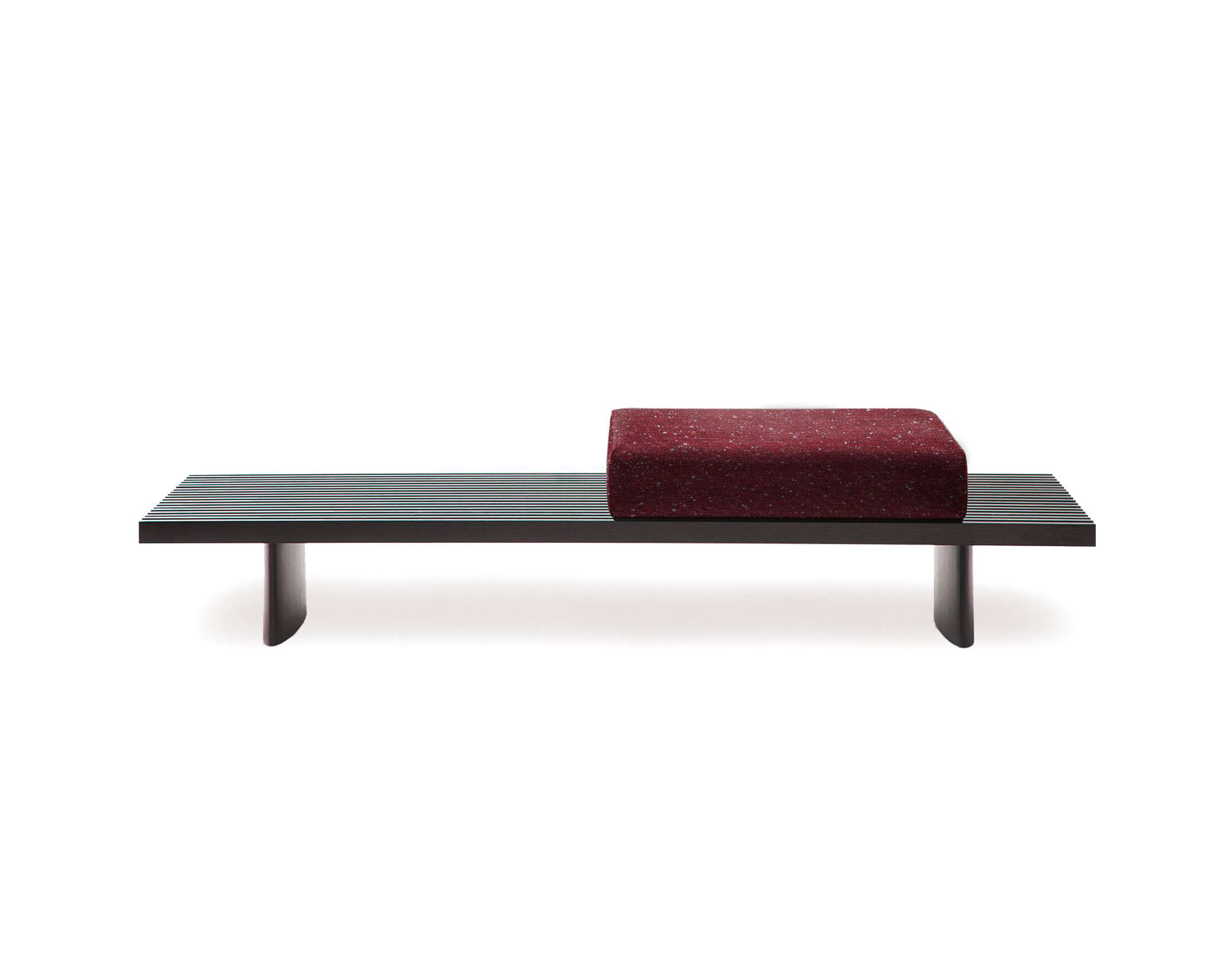
Refolo
Cassina

Maralunga
Cassina
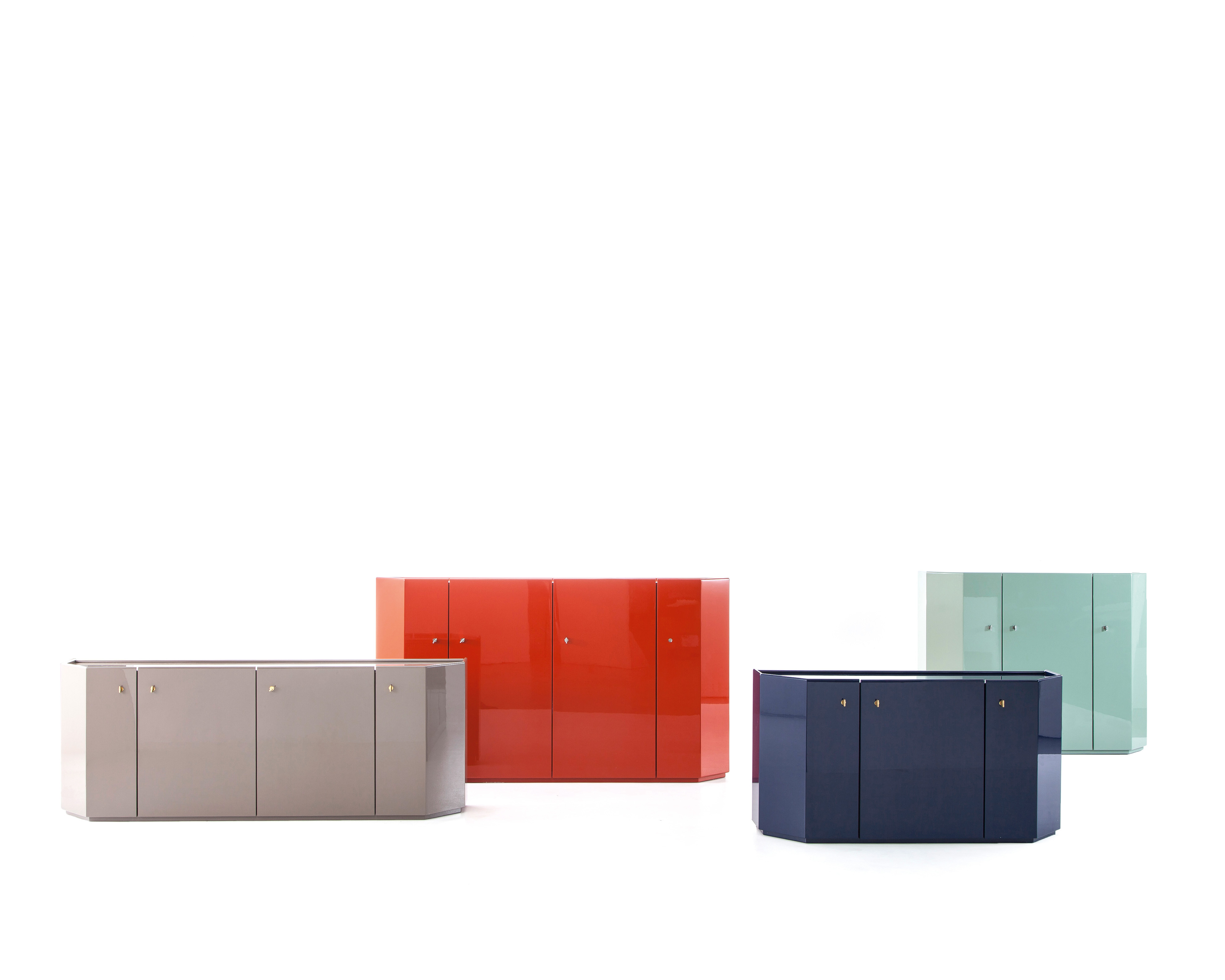
Bramante
Cassina
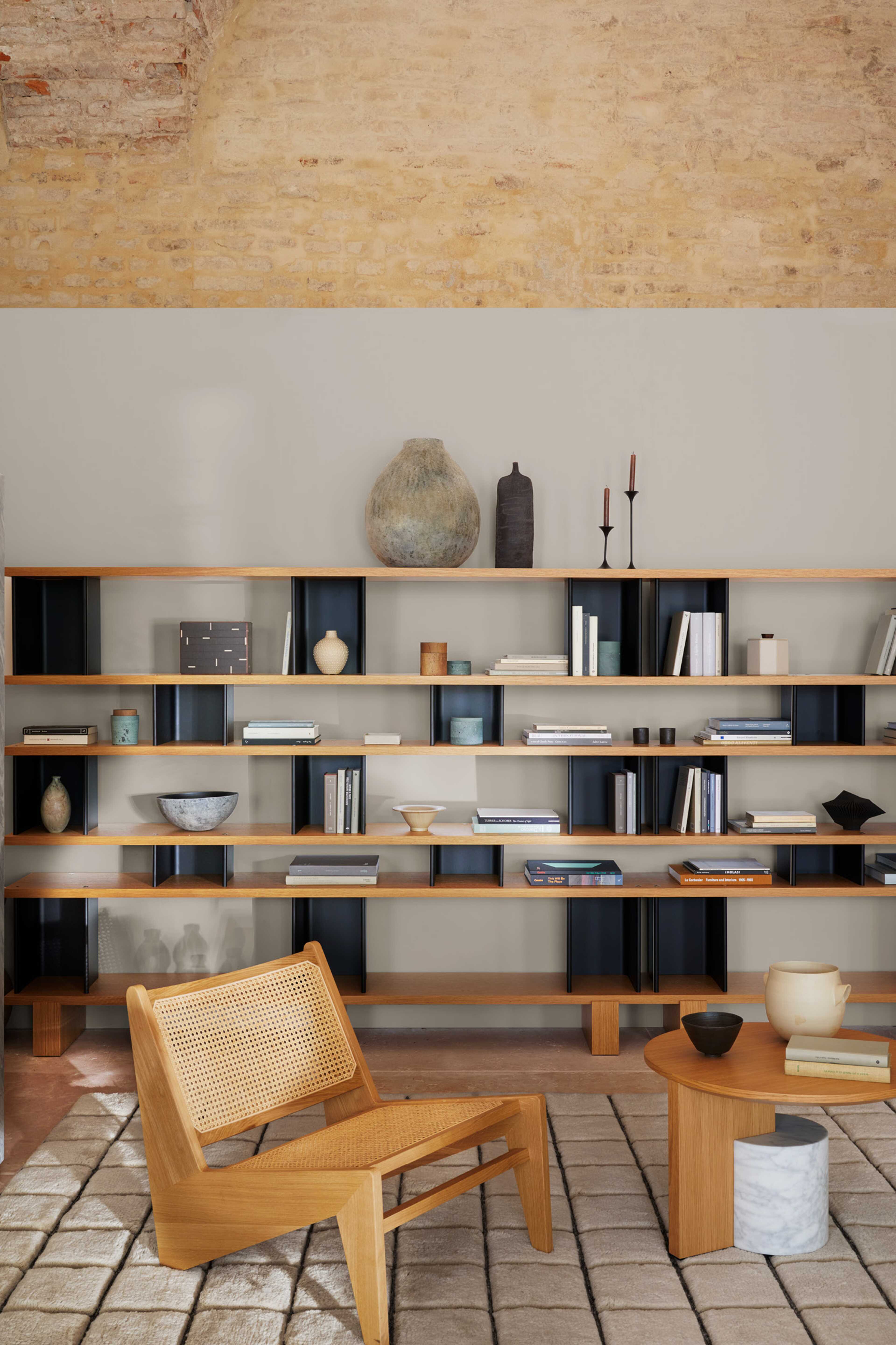
Nague
Cassina

Riflesso
Cassina
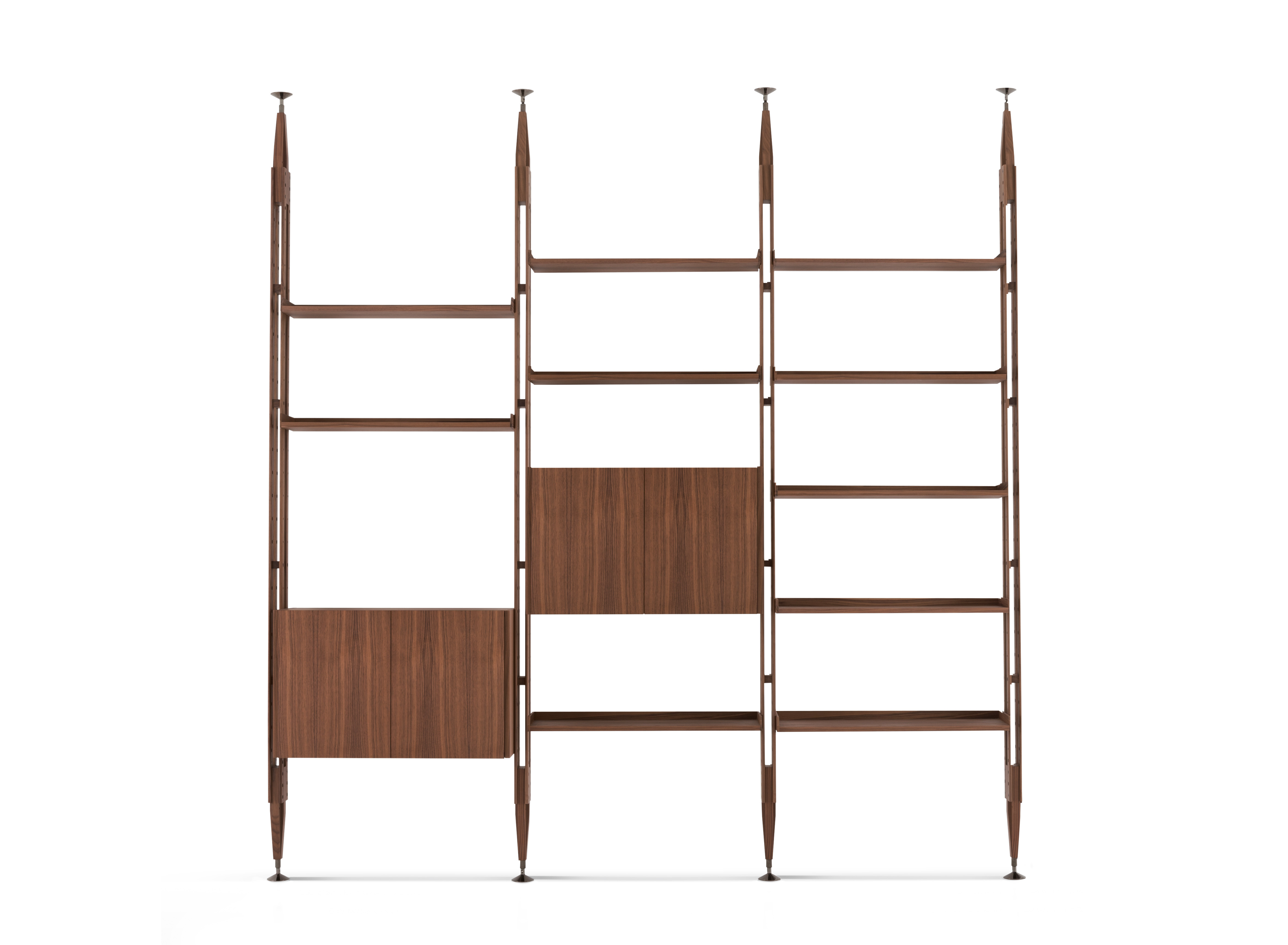
Infinito
Cassina
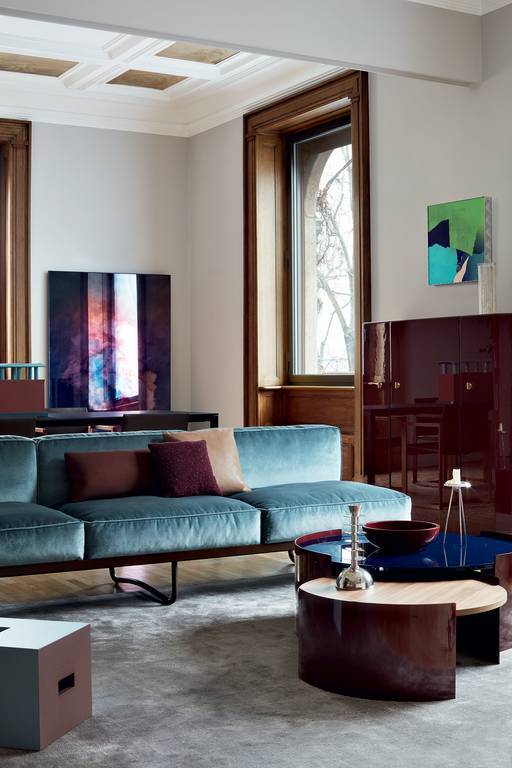
LC5
Cassina
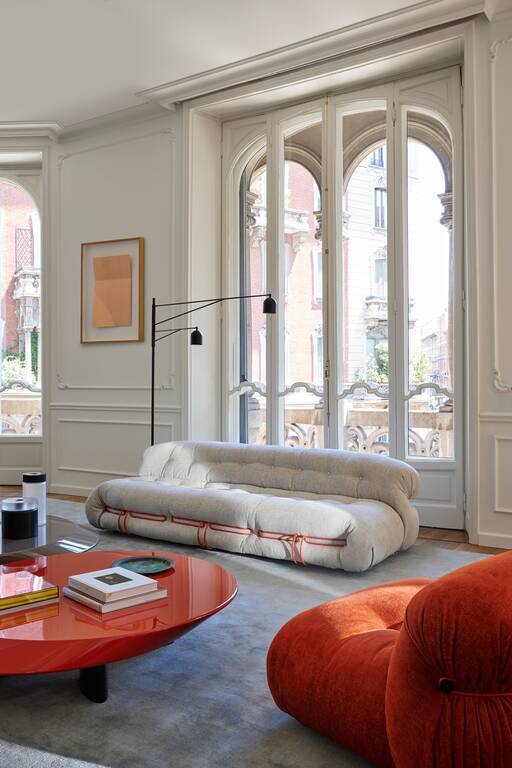
Soriana
Cassina

Tokyo Chaise Lounge
Cassina
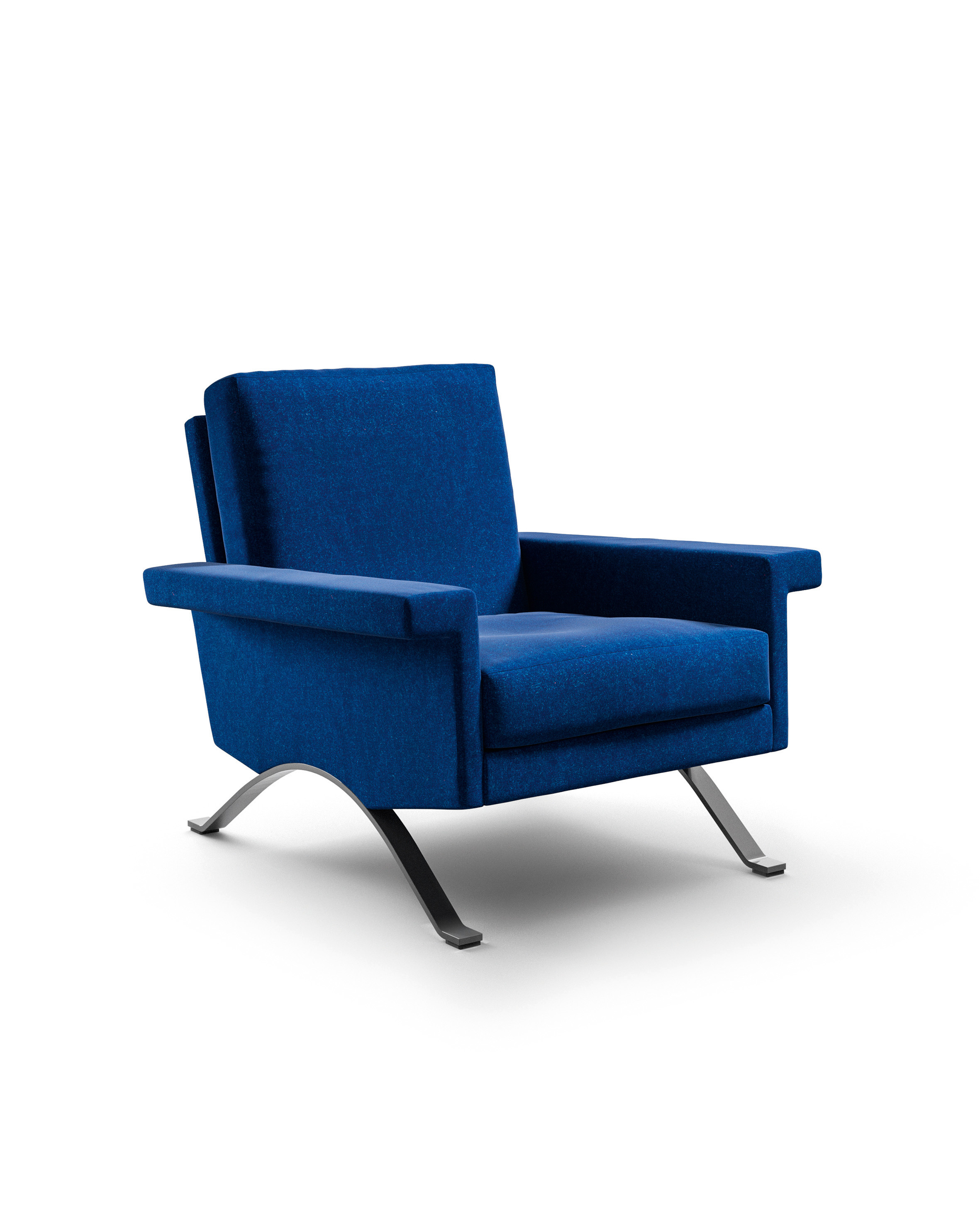
875
Cassina
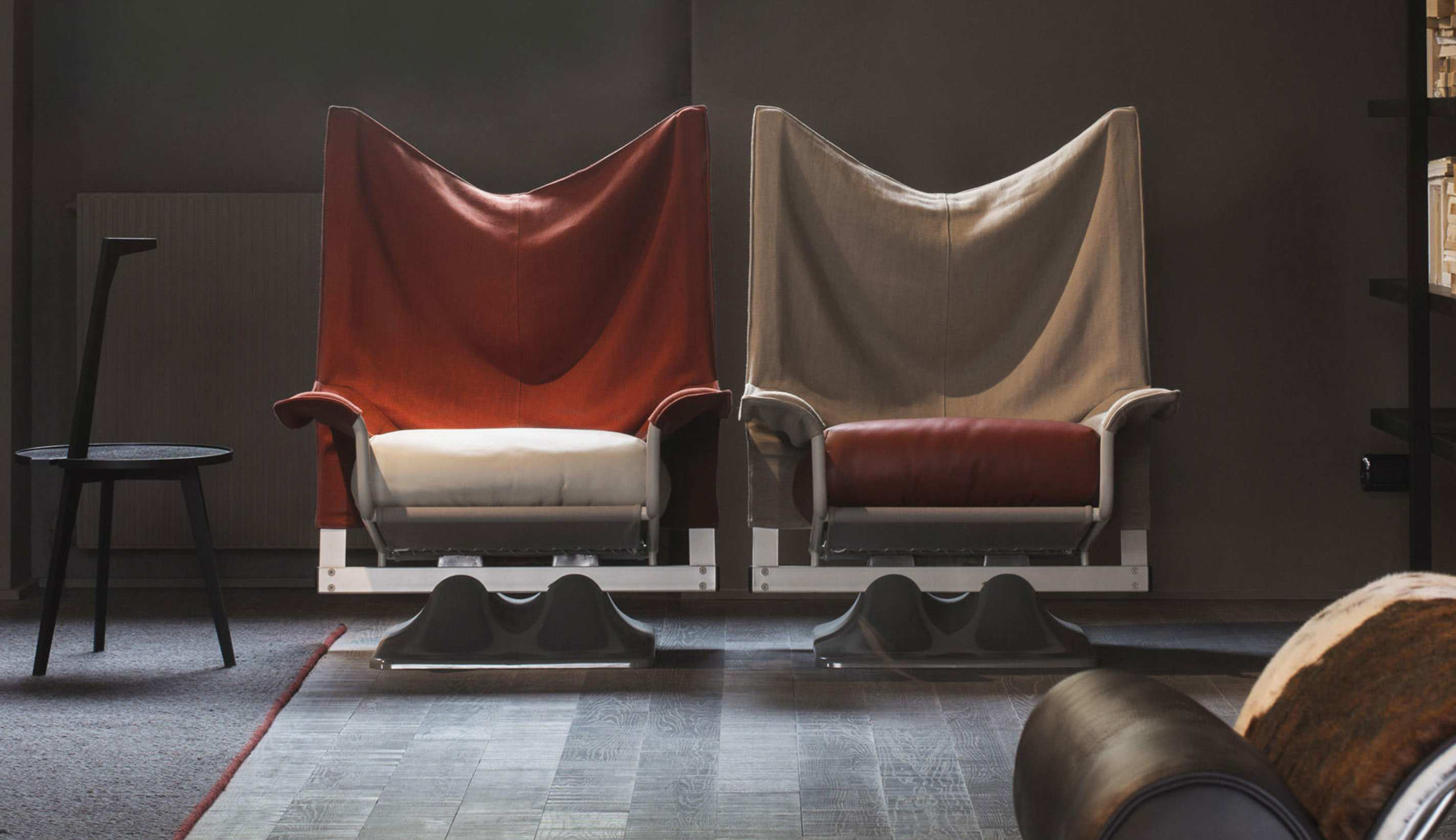
AEO
Cassina

Ombra
Cassina

Lady
Cassina
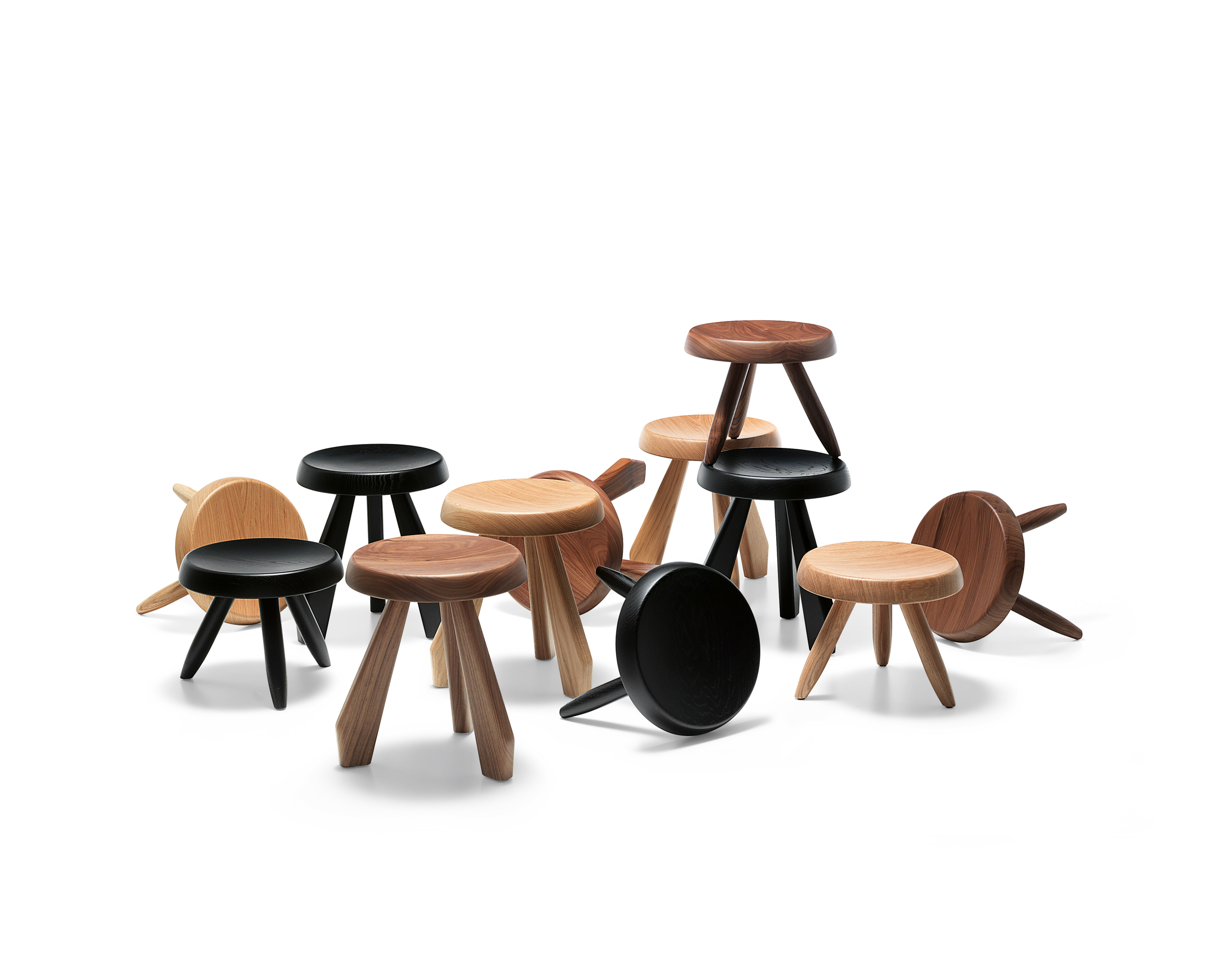
Tabouret Berger
Cassina
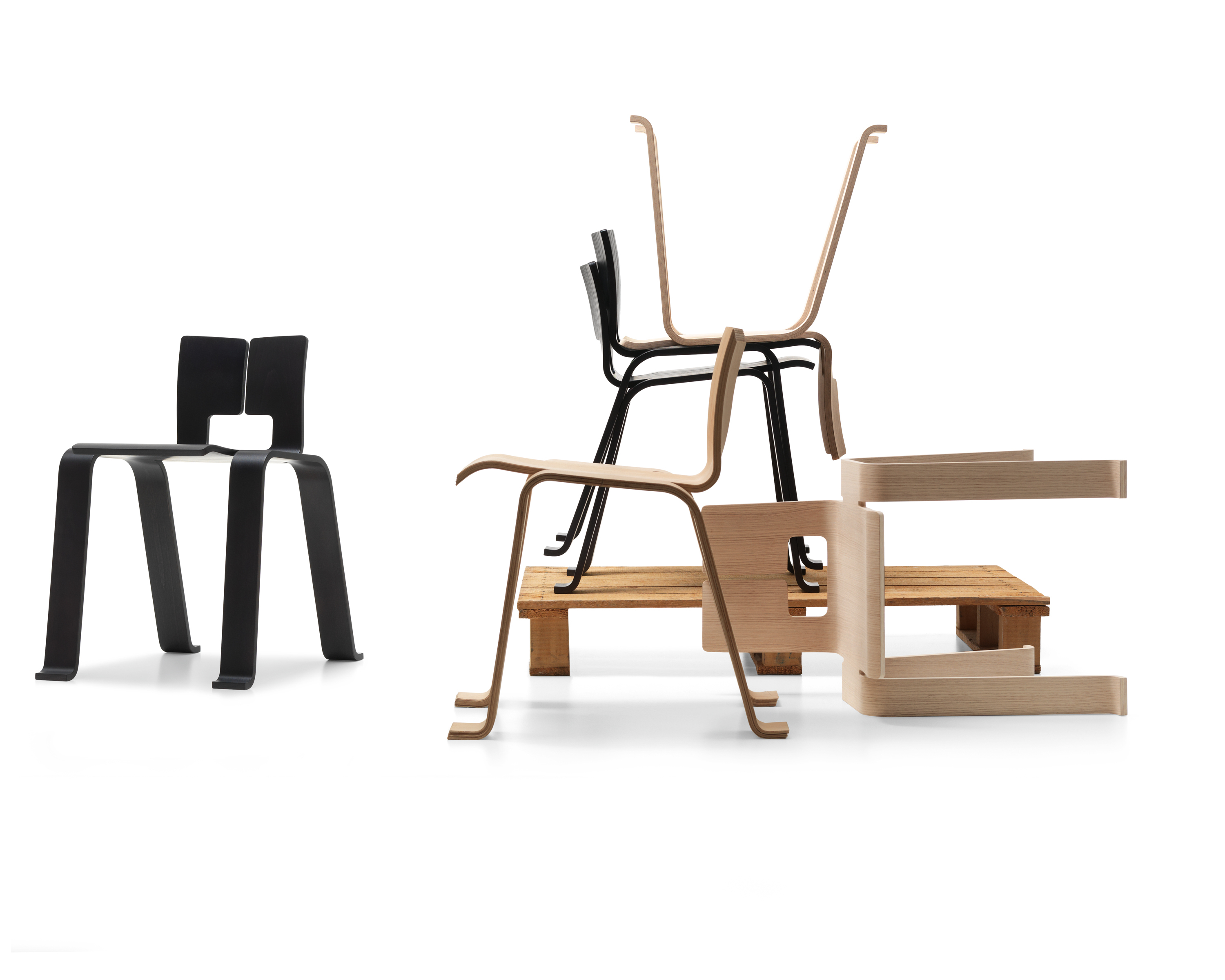
Ombra Tokyo
Cassina
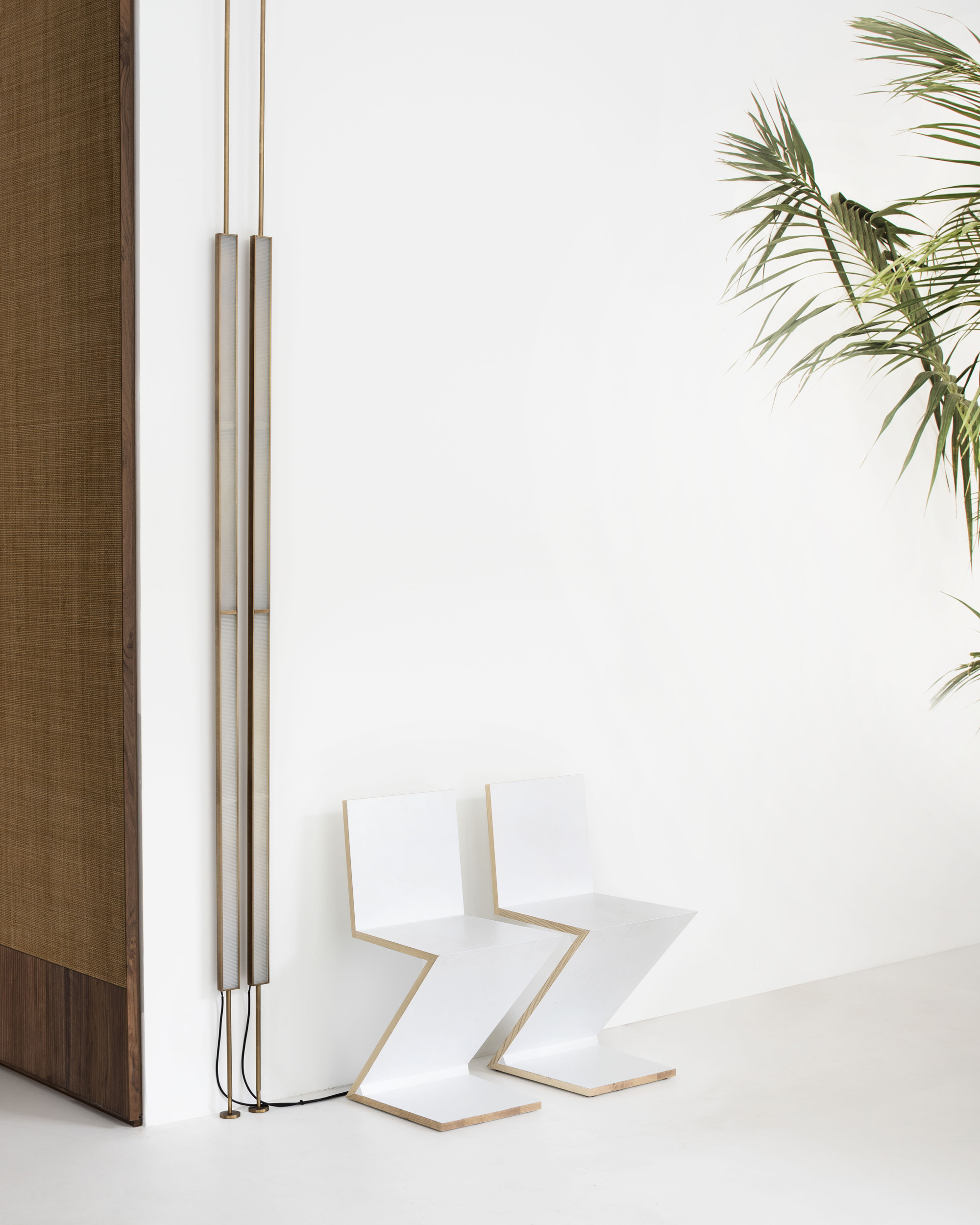
Zig Zag
Cassina
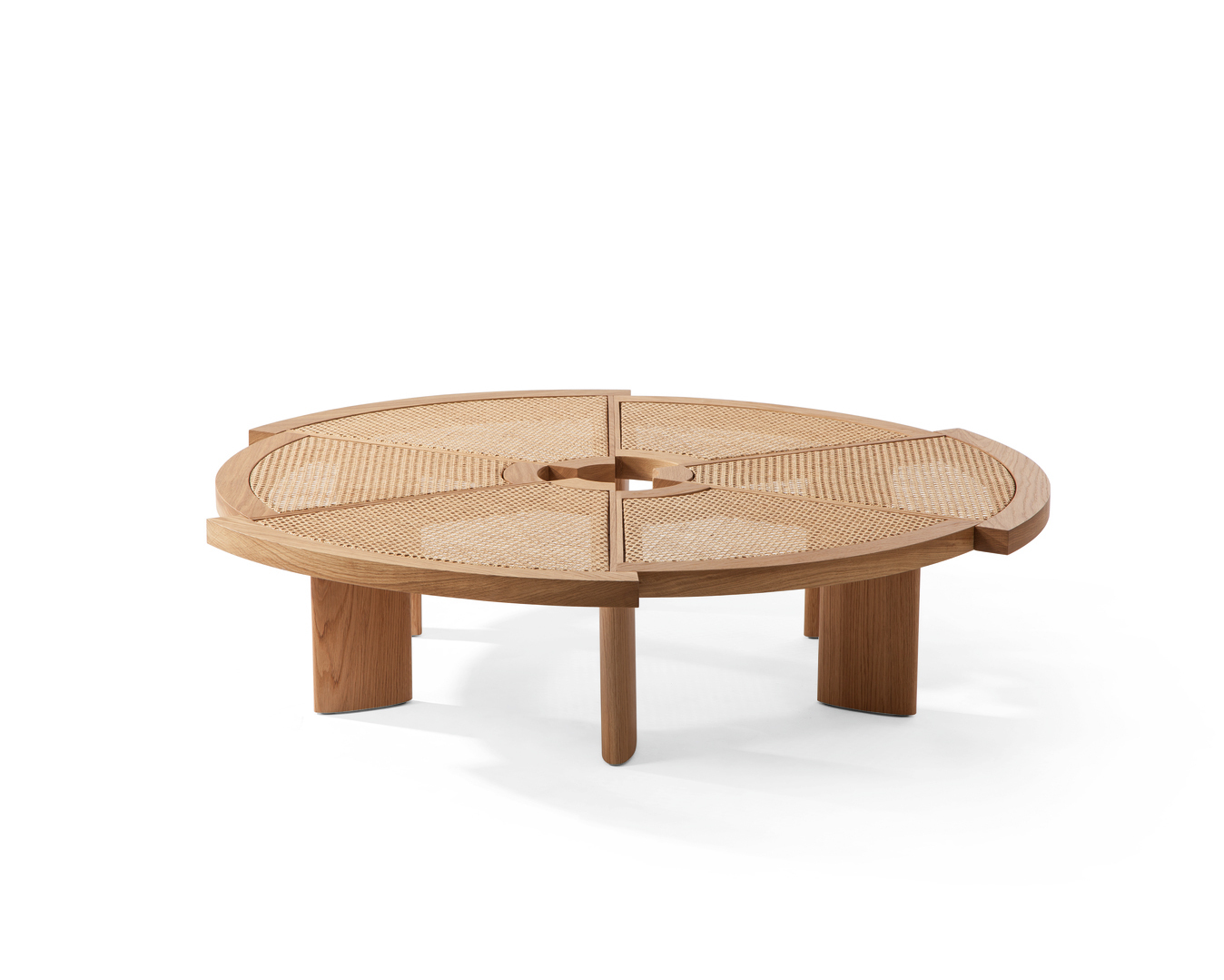
Rio
Cassina
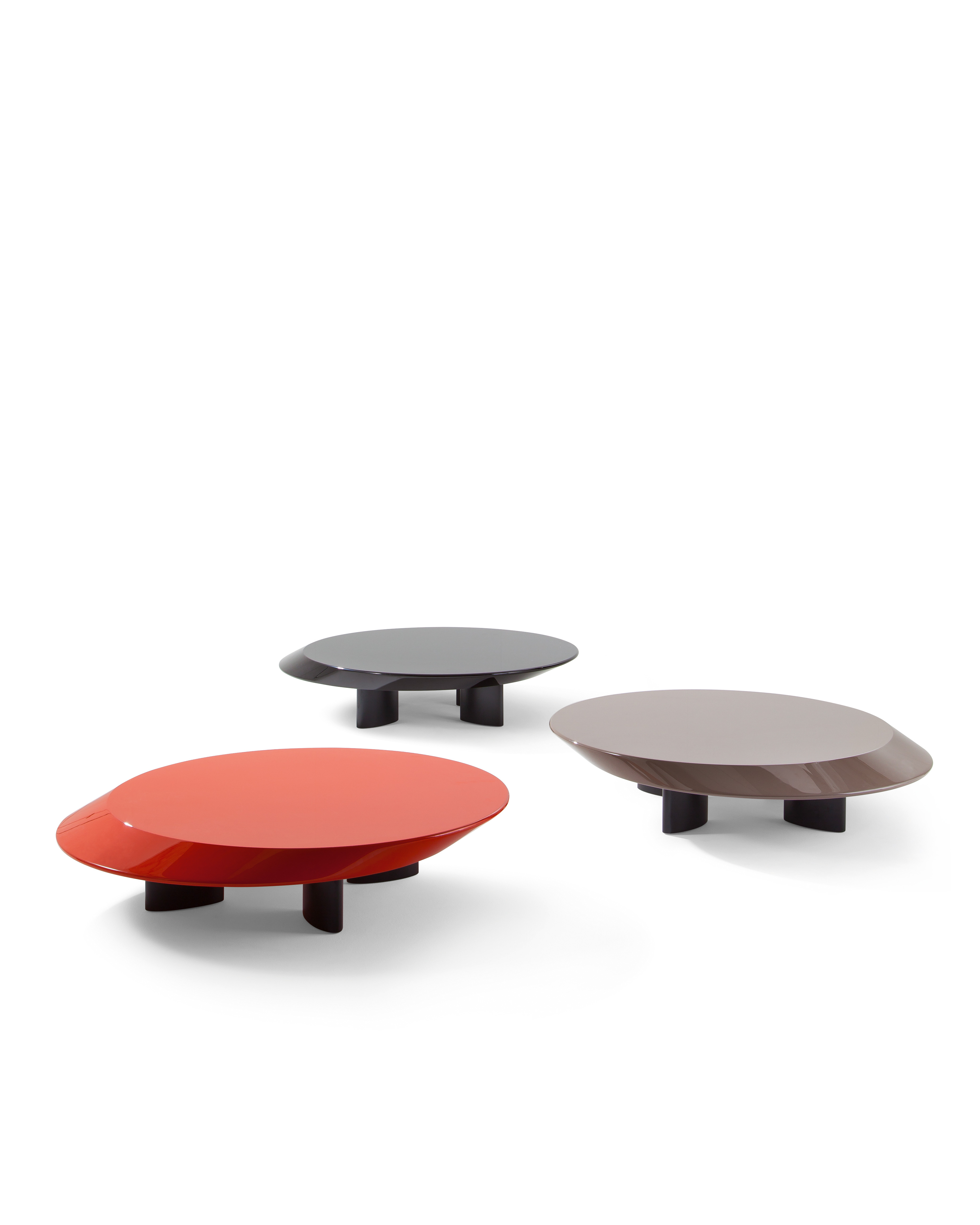
Accordo
Cassina
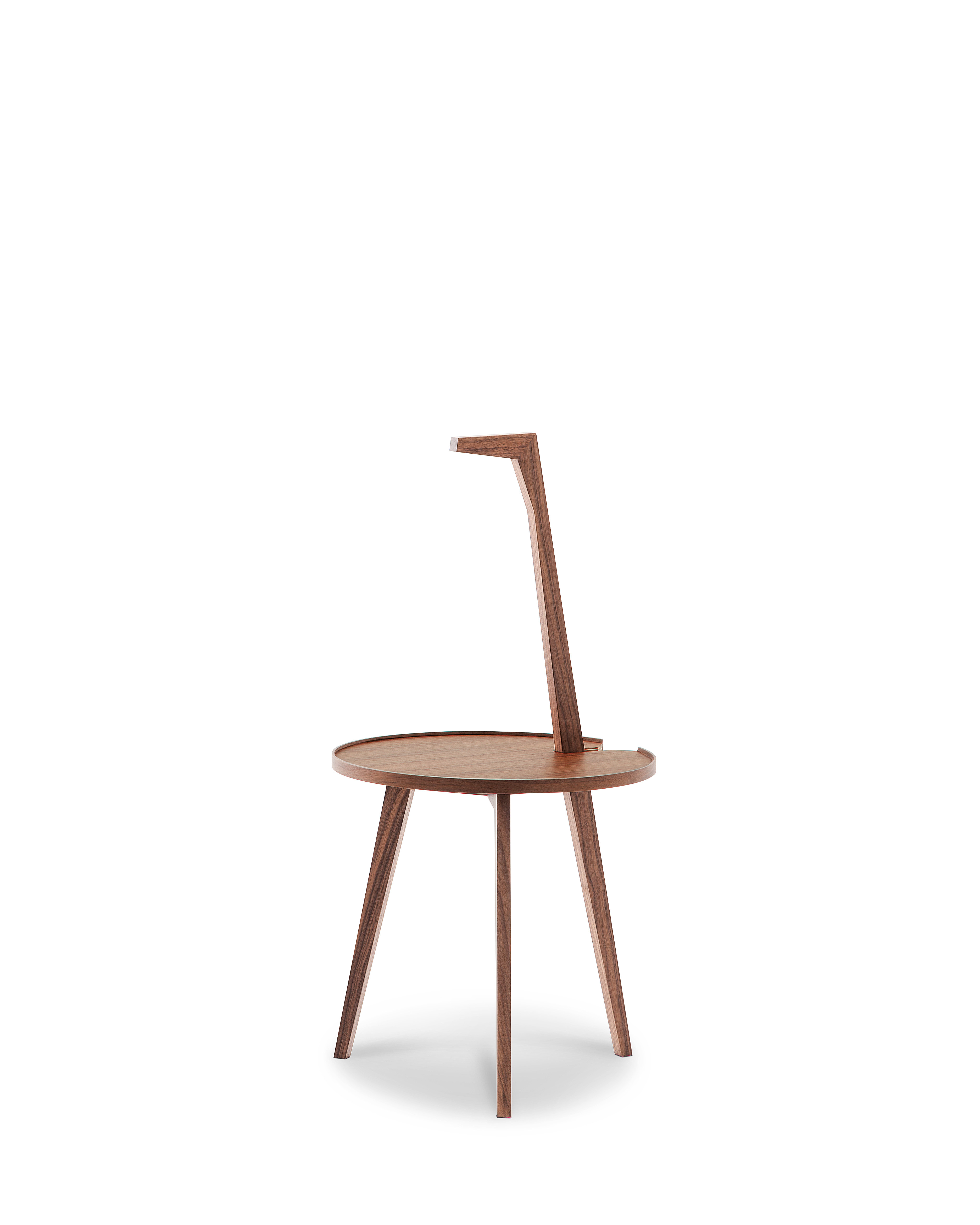
Cicognino
Cassina
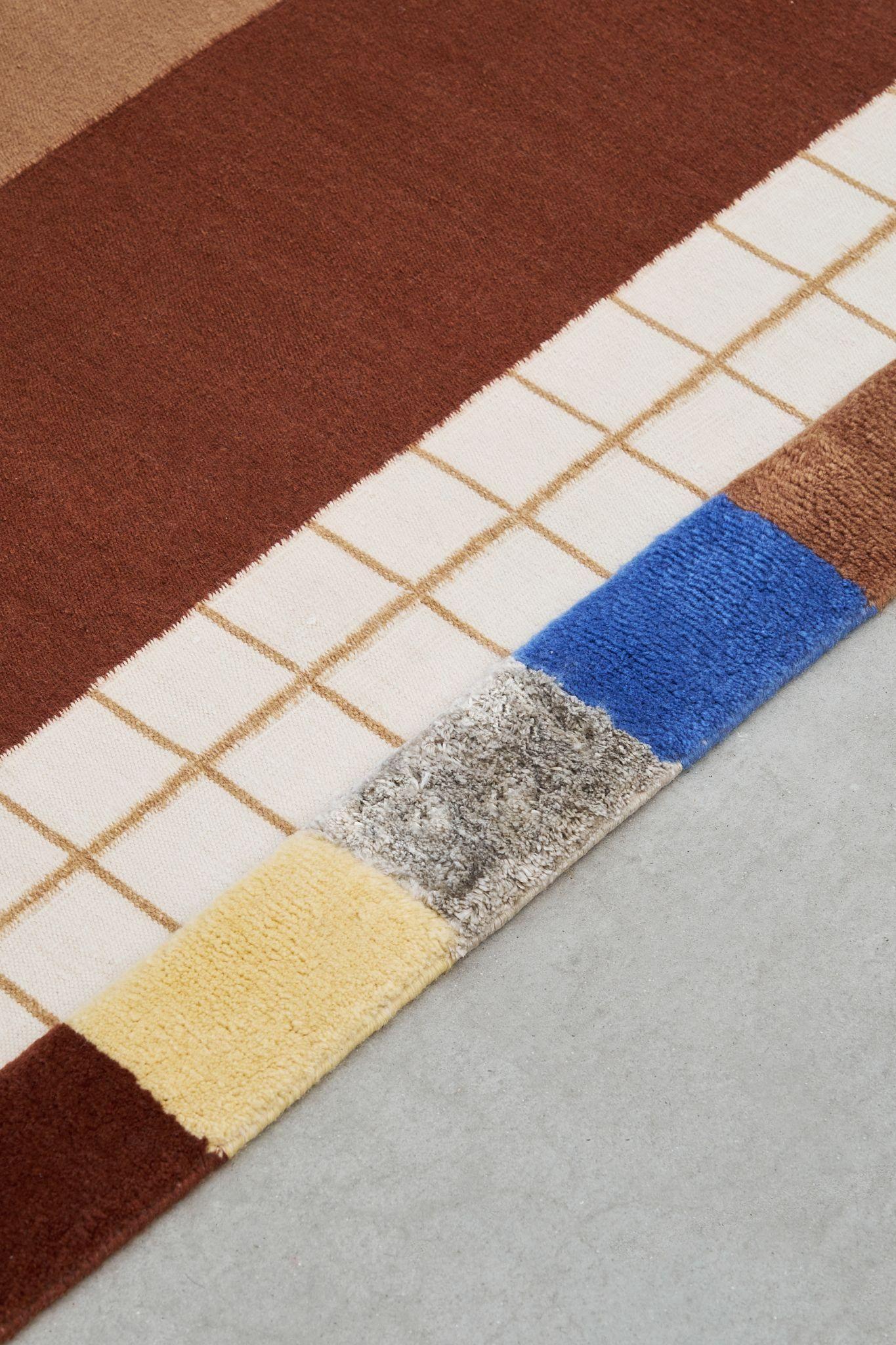
Raag
cc-tapis
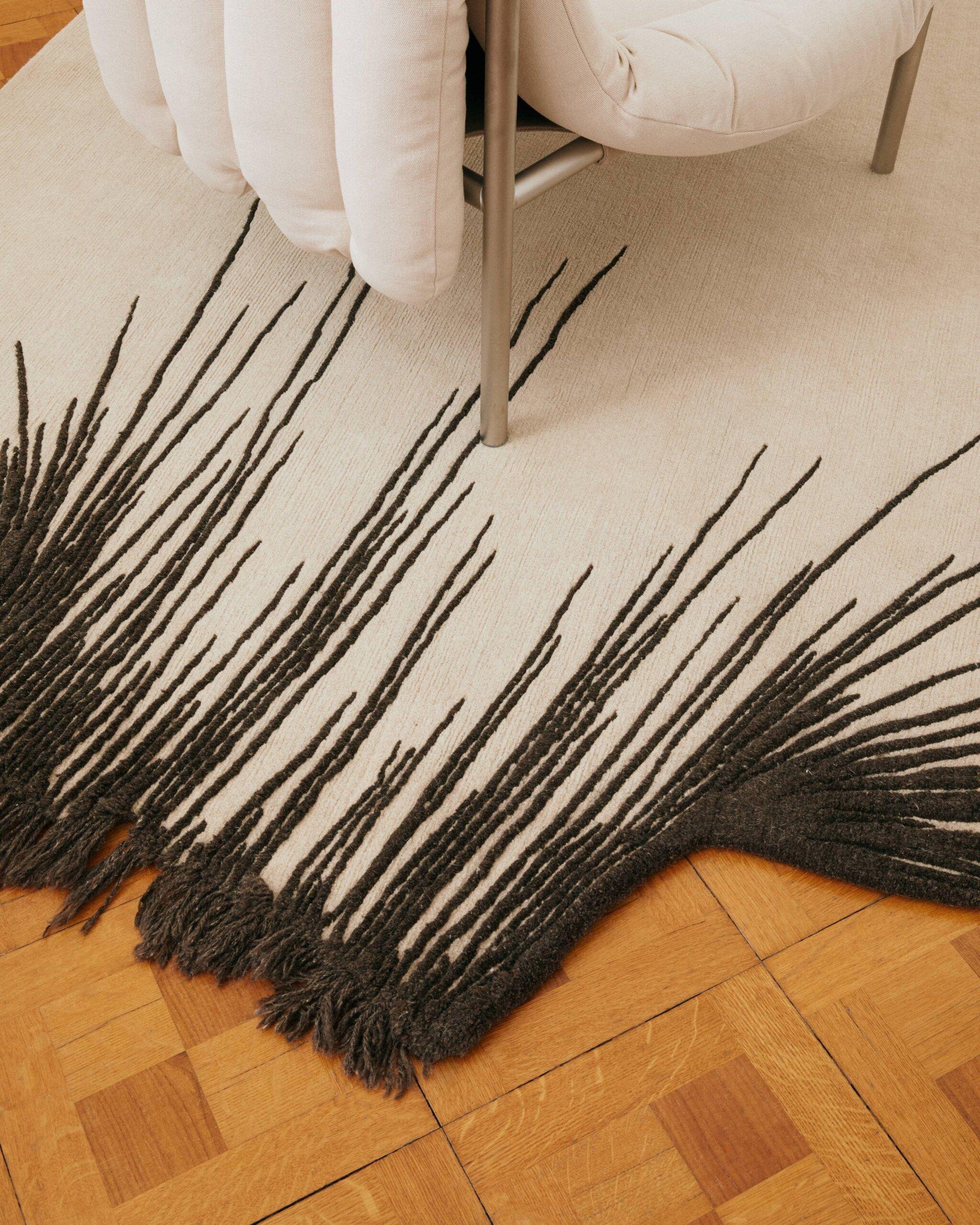
Scene 1
cc-tapis
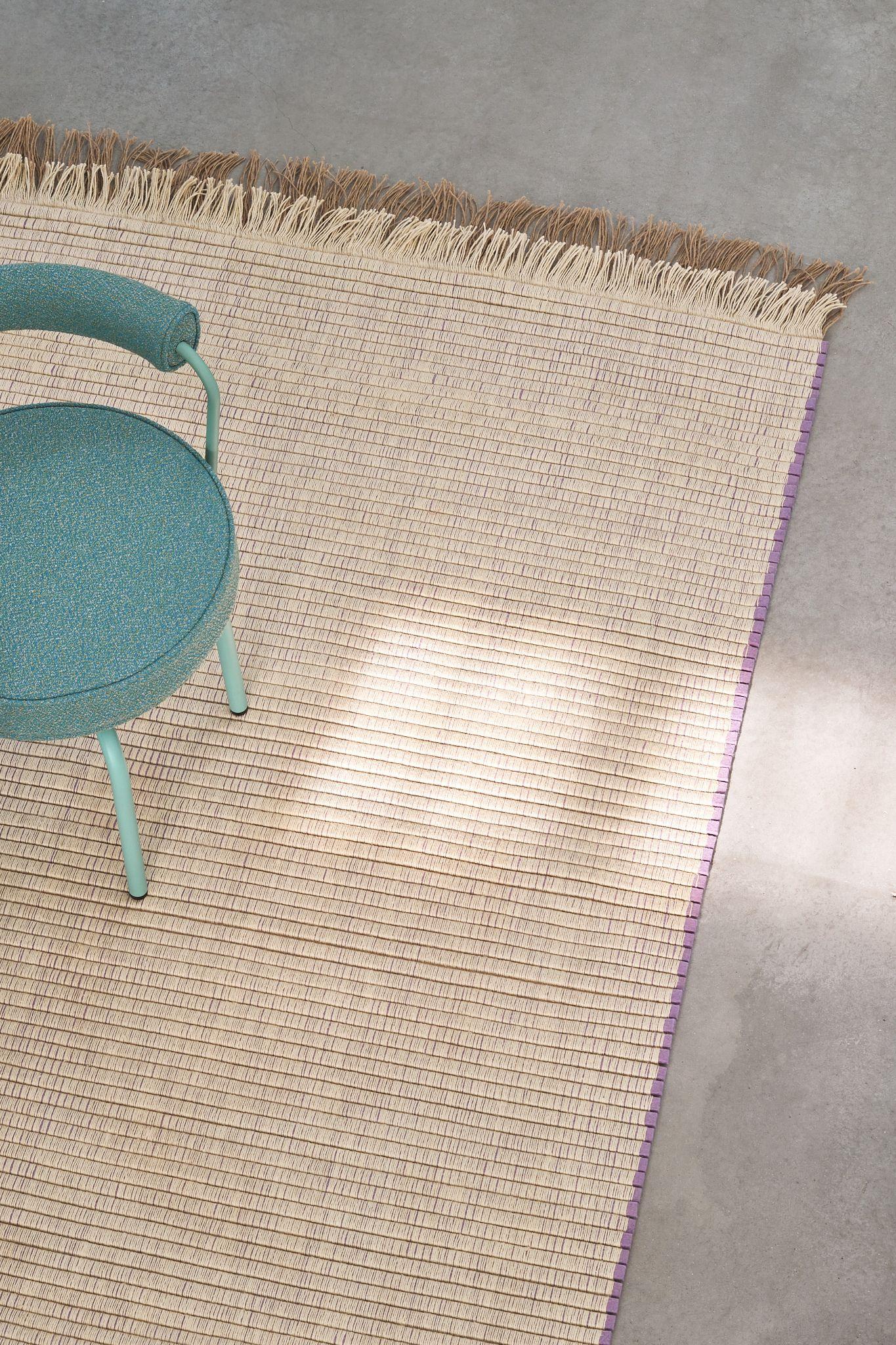
Omote
cc-tapis
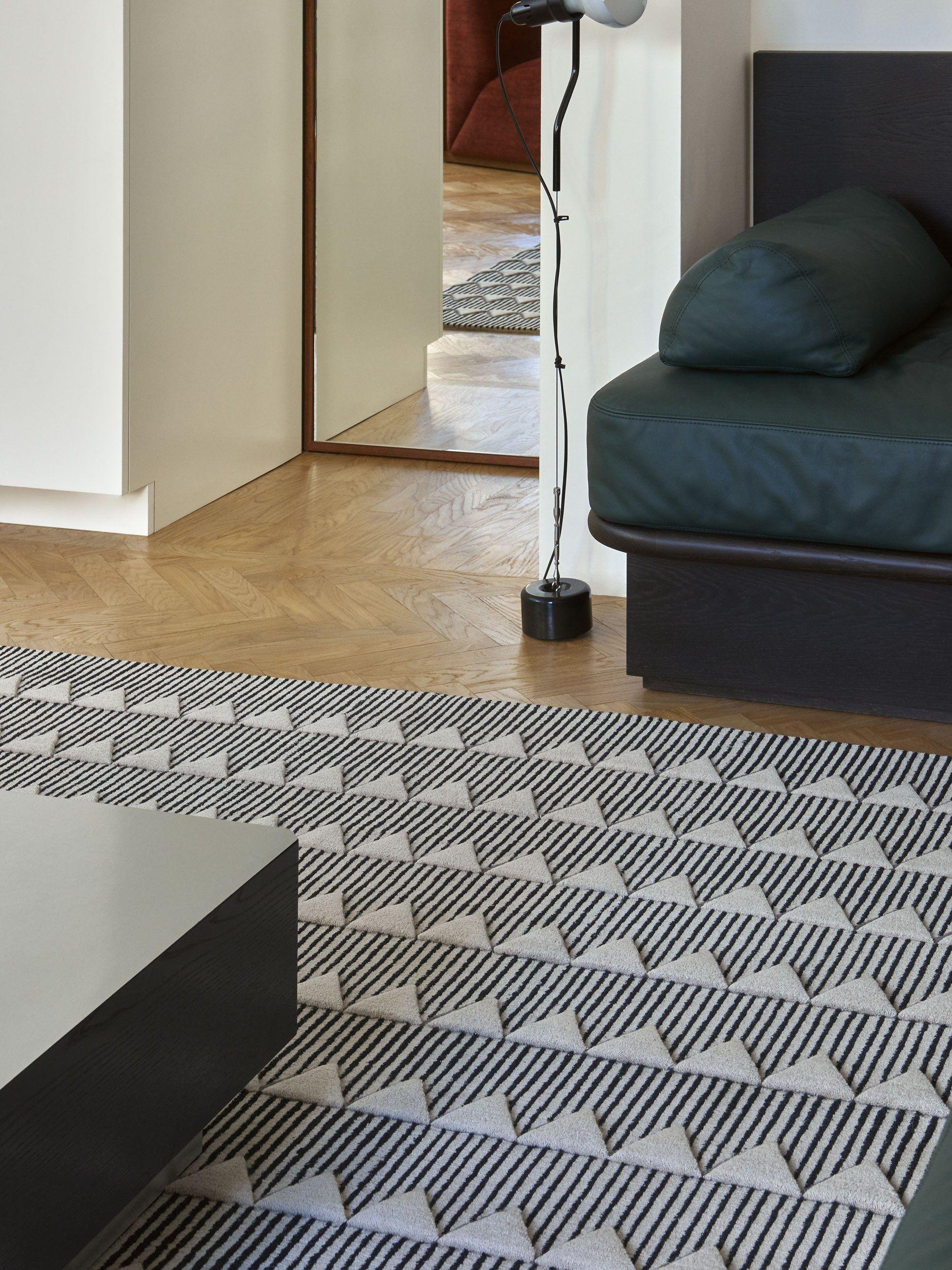
Plasterworks D
cc-tapis
